

William Stopford
Every SUV, ute and van discontinued in Australia in 2025
12 Hours Ago
Hyundai and Volvo have taken very different approaches to these electric cars, but the results are similar on paper. Which recipe is more appealing in the real world?

Contributor
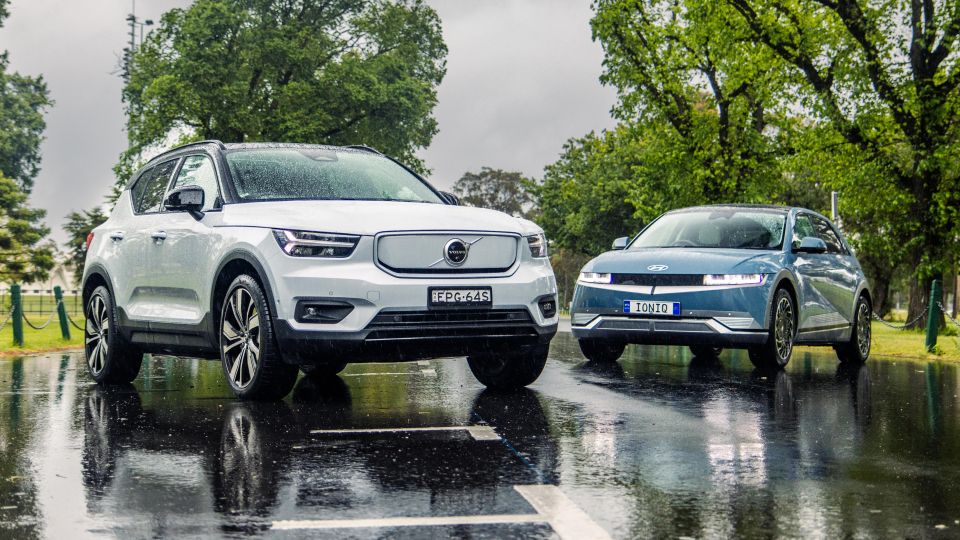

Contributor
The electric revolution is coming, but carmakers haven’t yet agreed on what it’s going to look like.
On test here are two electric crossovers that offer similar range and performance at similar prices, but go about it in very different ways.
You’ve probably heard of the Hyundai Ioniq 5 by now. Built on a dedicated electric car platform, it shouts about the fact it’s battery-powered from the rooftops with its stunning retro-futuristic design and bespoke, modern interior.
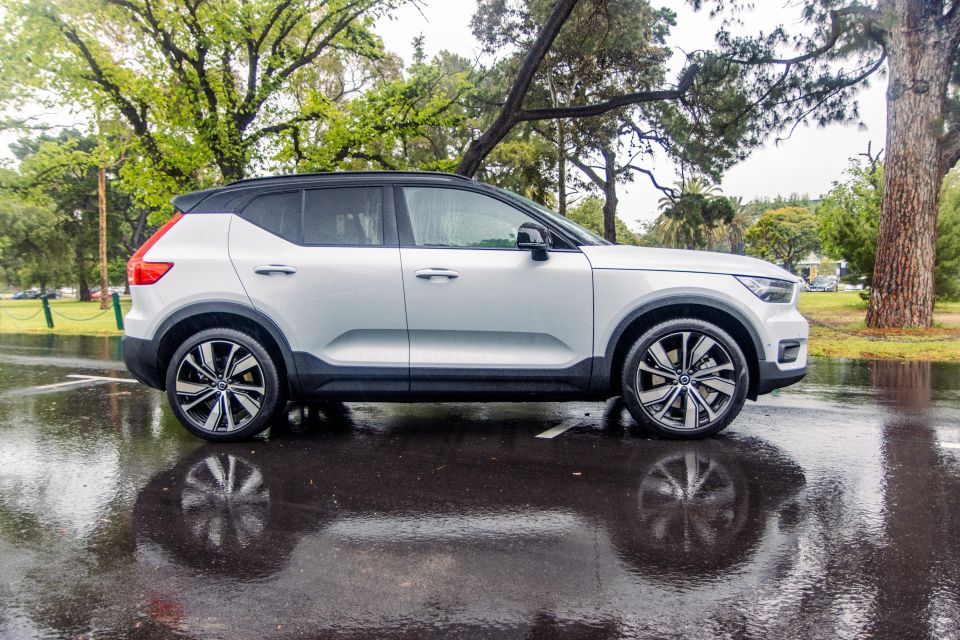
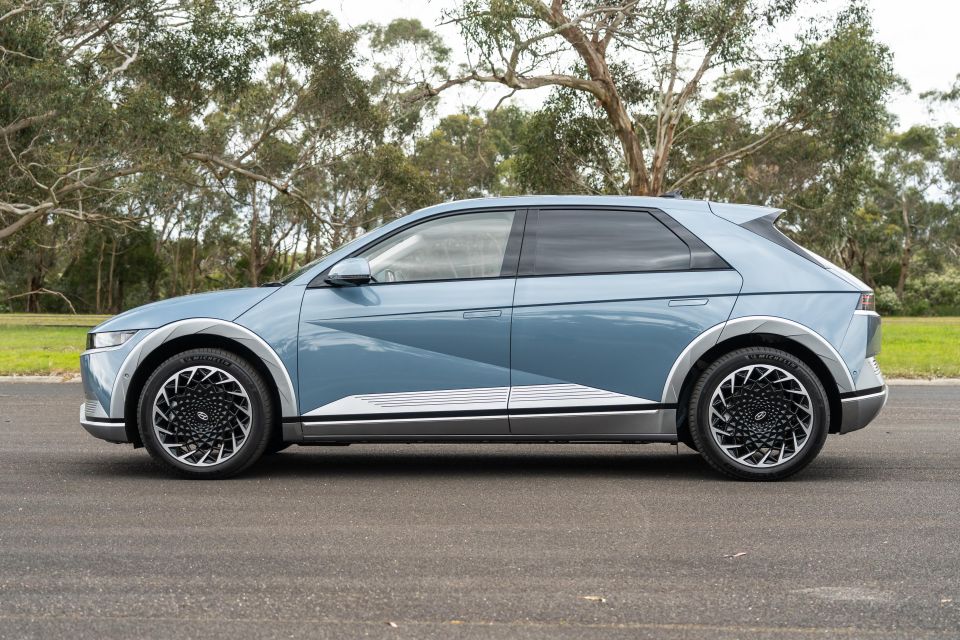
Rather than evolving what Hyundai is doing in the internal-combustion world, the Ioniq 5 rips up the recipe and starts fresh.
The Volvo XC40 Recharge Pure Electric flies under the radar by comparison. Under the skin hides a variation of the CMA platform used in the regular XC40, and only eagle-eyed fans will be able to tell it’s electric from the outside.
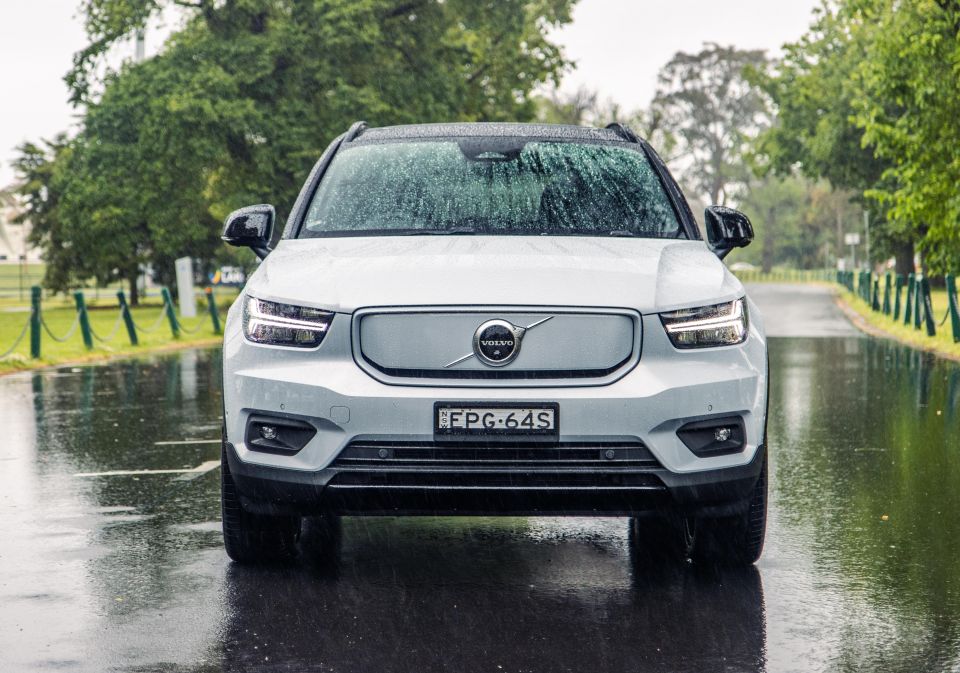
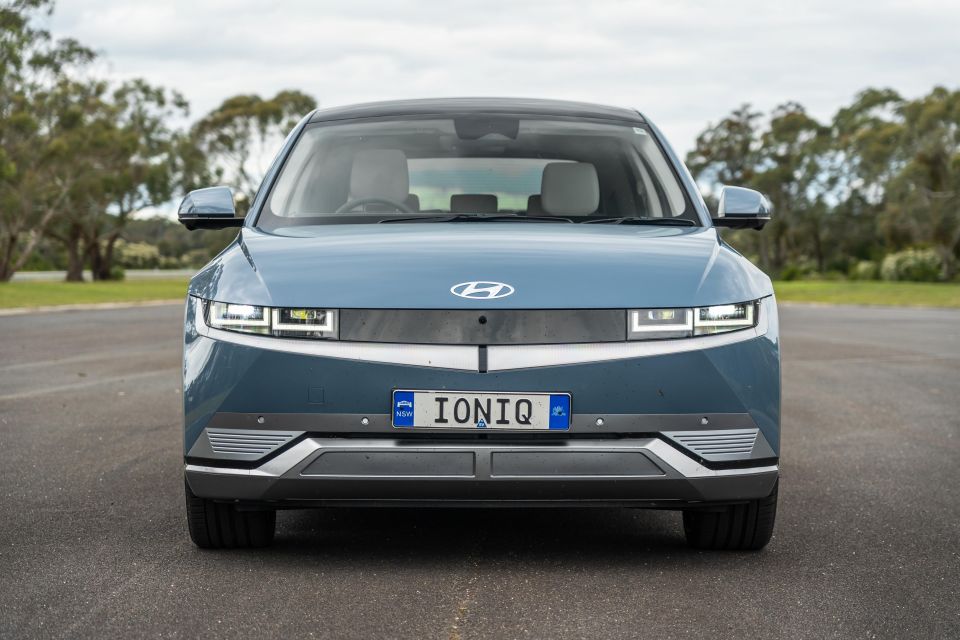
Despite their fundamentally different approaches, these two are hard to split on paper. Their prices are separated by just $1000, they both sprint to 100km/h in around five seconds, and only 12km splits their range claims.
Which approach stacks up better in the real world?
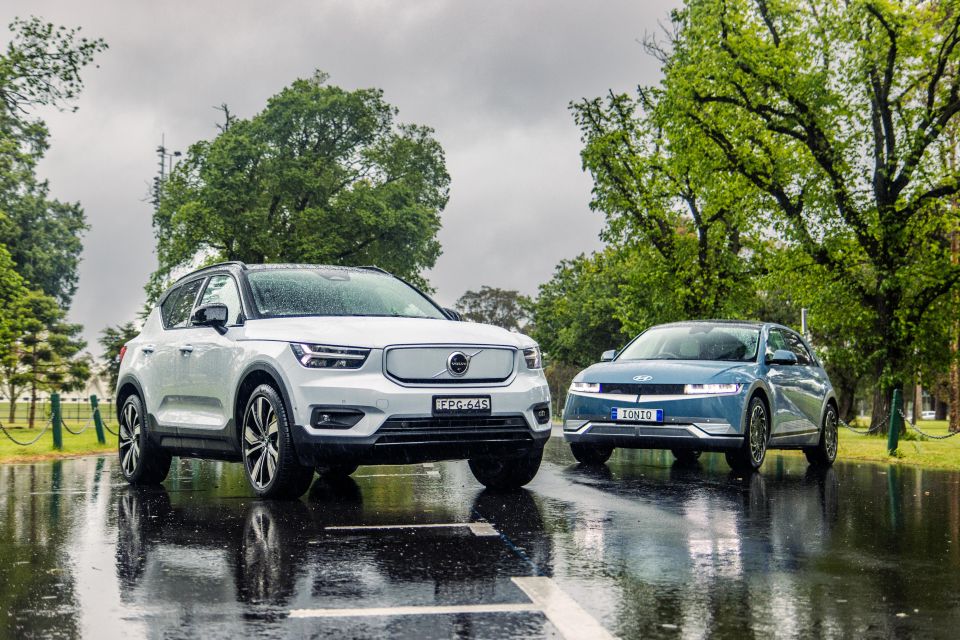
Hyundai Ioniq 5
The Hyundai Ioniq 5 range starts at $71,900 before on-road costs for the entry-level two-wheel drive car, but the dual-motorIoniq 5 AWD on test here has a list price of $75,900 before on-roads.
Neither of these brands offers many options, but you are able to make your Ioniq 5 slightly more expensive with matte paint ($1000). It’s also available with a range of factory accessories, including a tow bar kit ($1490).
Although it’s distributed through the Hyundai Australia dealer network, buyers pay a fixed price and the limited first batch of stock was sold through an online portal.
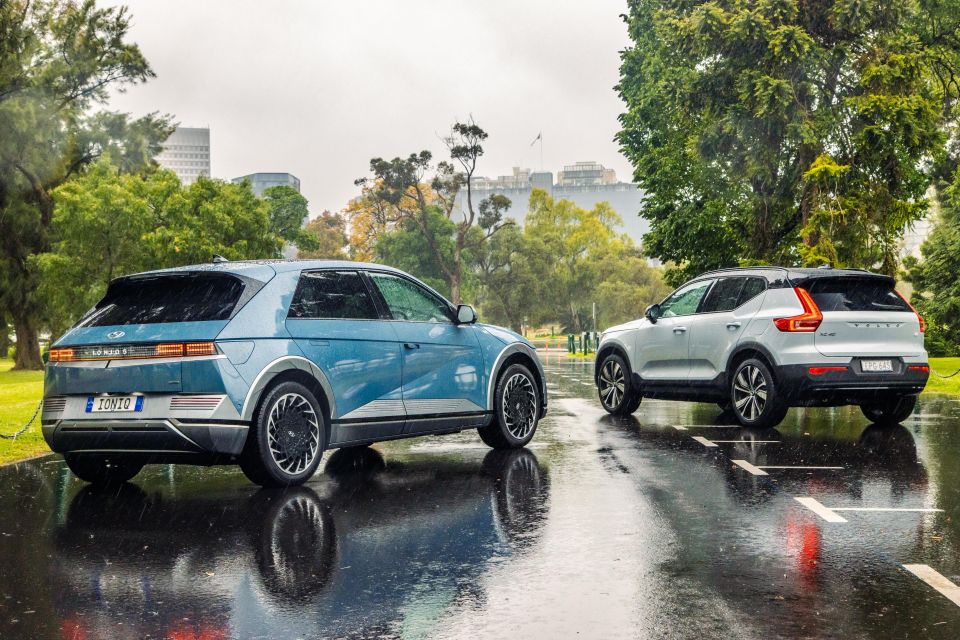
Volvo XC40 Recharge Pure Electric
Only one version of theXC40 Recharge Pure Electric is offered in Australia, priced at $76,990 before on-road costs.
There are no options, nor any extra-cost paint options. What you see is what you get here.
Like the Hyundai, the Volvo is being sold using a fixed-price model. The first batch of cars sold out fast, but more stock is due in 2022.
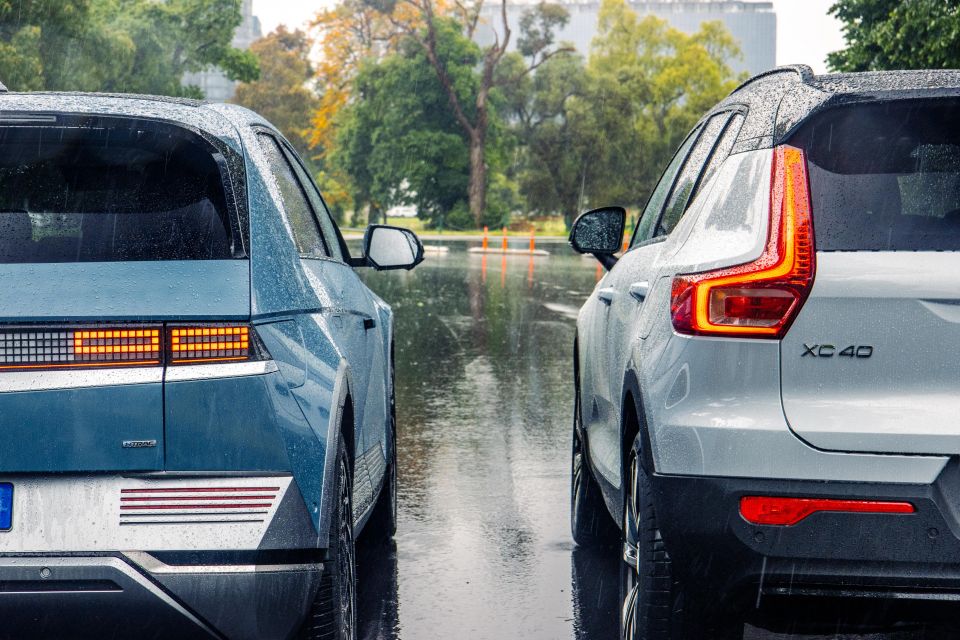
Standard equipment common to both cars includes:
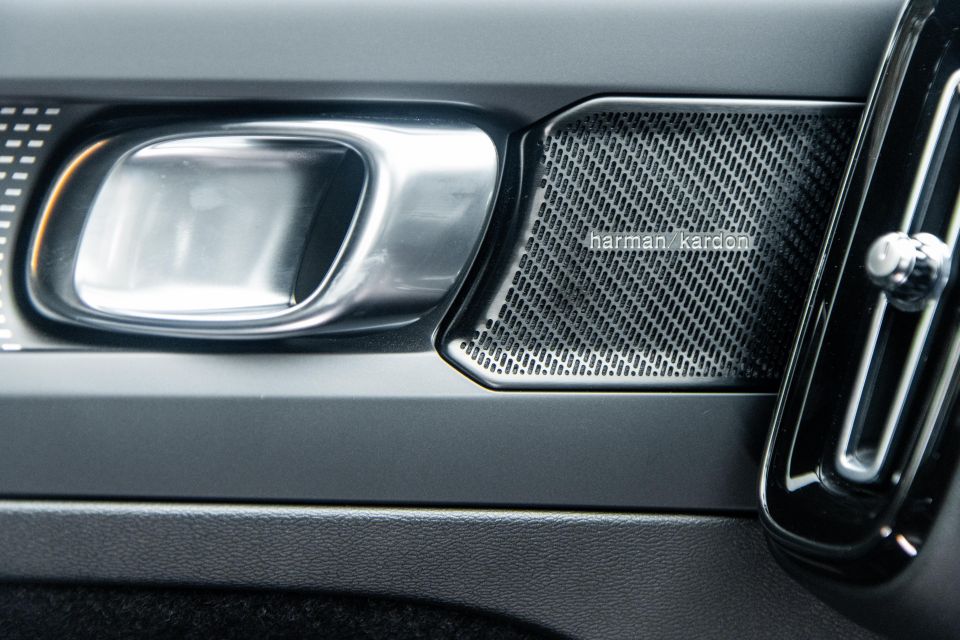
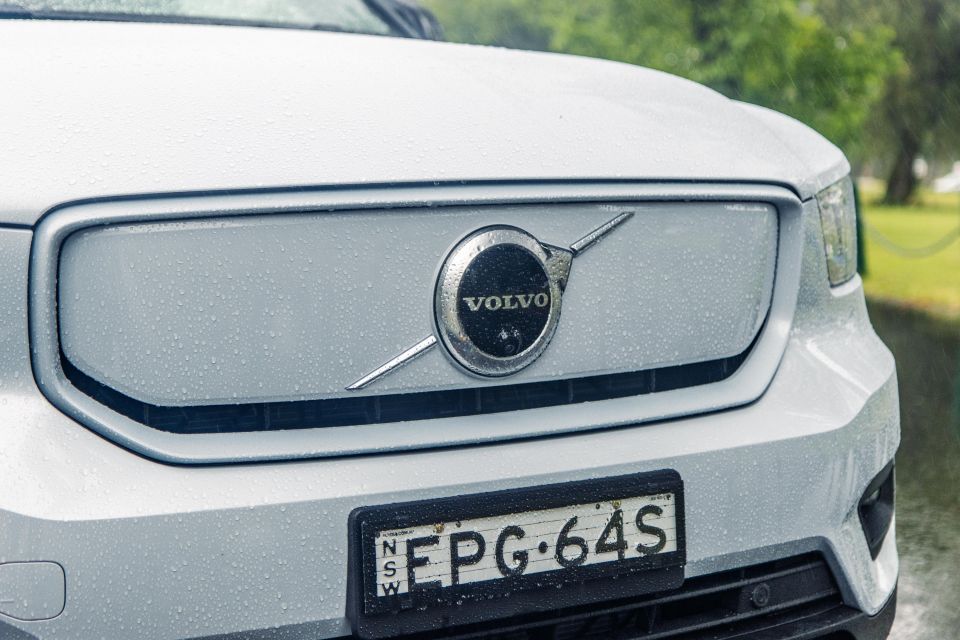
Unique to the Volvo are:
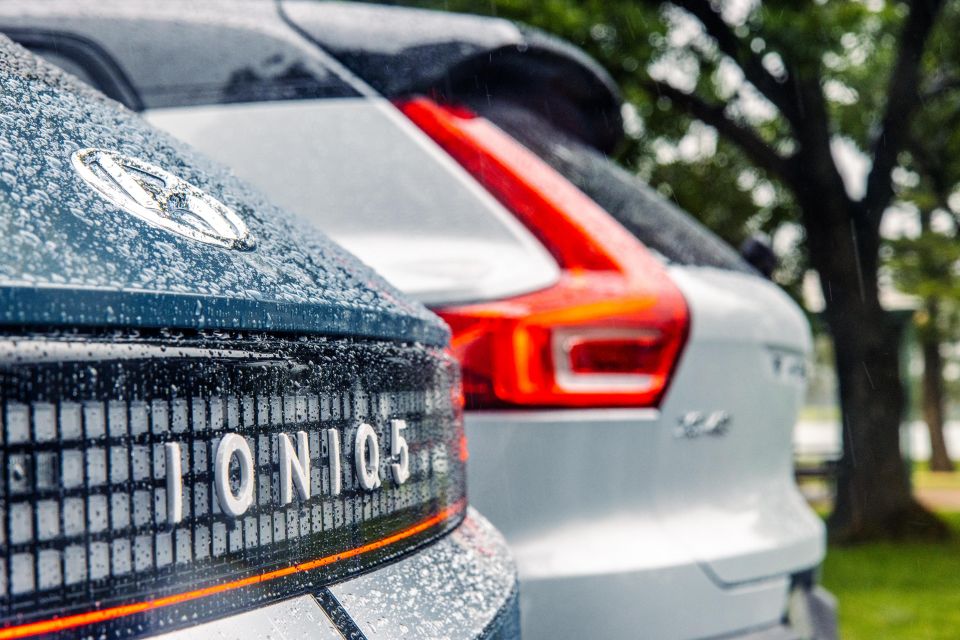
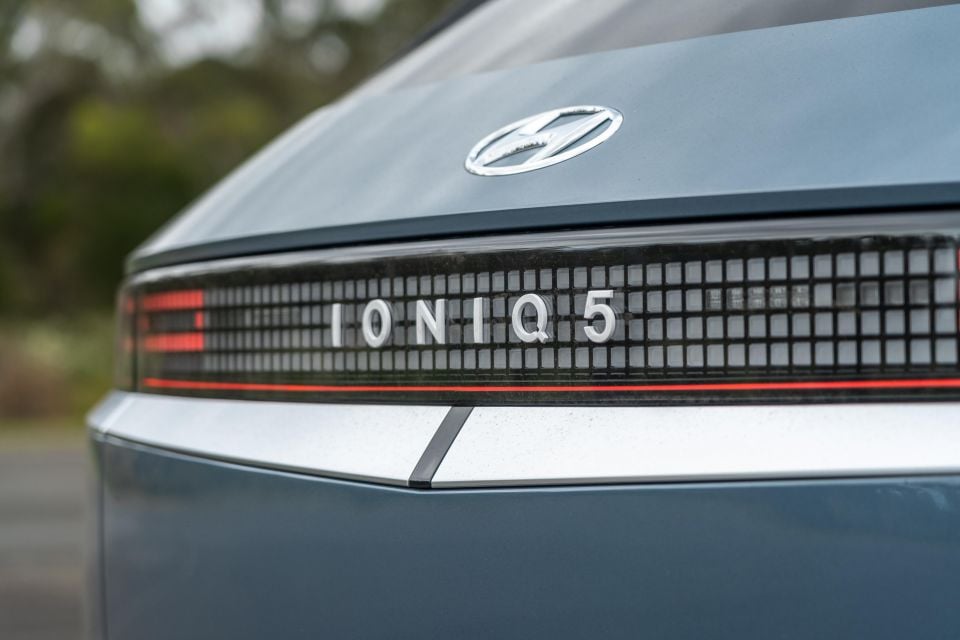
Unique to the Hyundai are:
Although neither car is light on for standard equipment, the Hyundai comes better equipped than the Volvo.
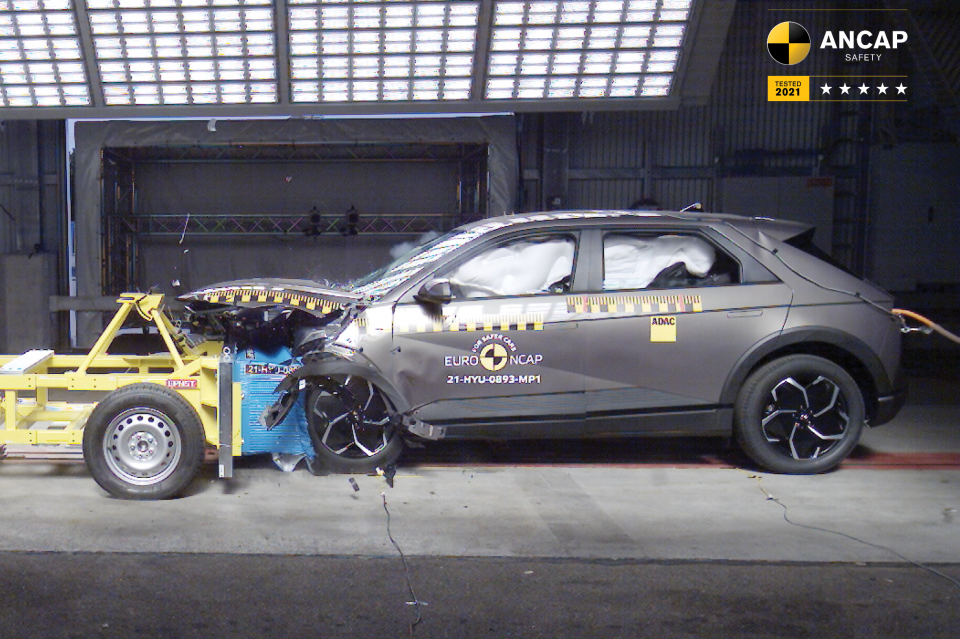
Both cars have five-star ANCAP safety ratings.
The Ioniq was tested in 2021, and earned an 88 per cent score for adult occupant protection, 87 per cent for child occupant protection, 63 per cent for vulnerable road user protection, and 89 per cent for safety assist.
Testing for the Volvo was conducted on the petrol-powered XC40 during 2018, but the rating has since been extended to include the pure-electric and plug-in hybrid Recharge models.
All models received an adult occupant protection score of 97 per cent, child occupant protection score of 84 per cent, vulnerable road user protection score of 71 per cent and a safety assist score of 78 per cent.

Standard safety equipment on both cars includes:
Unique to the Hyundai are:
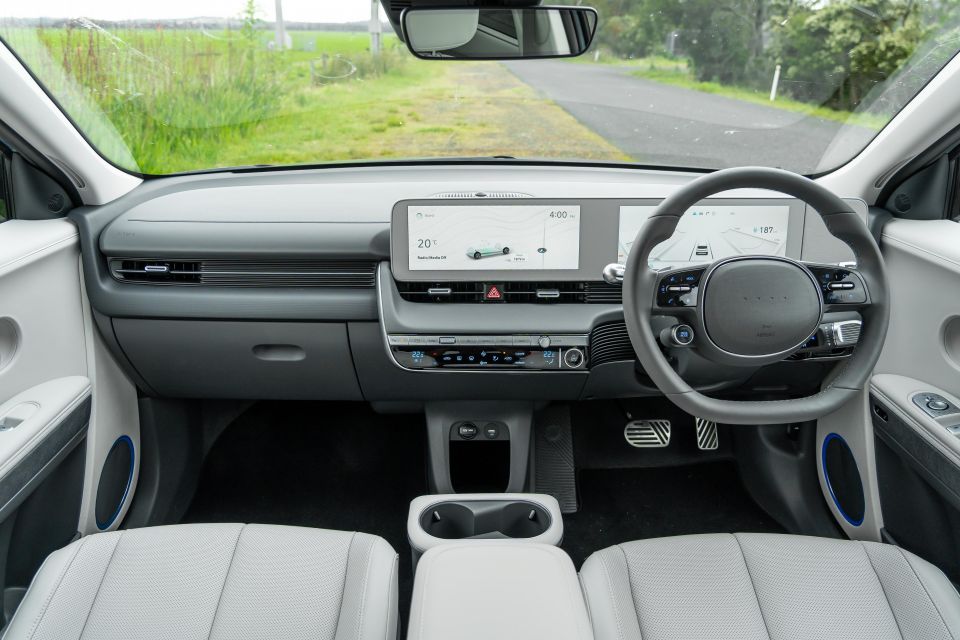
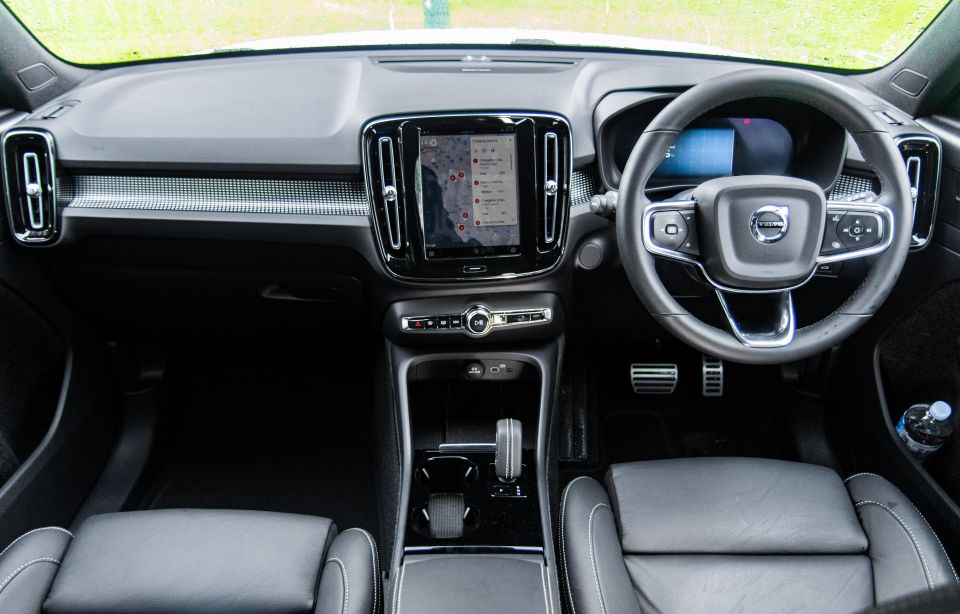
Hyundai Ioniq 5
There are some familiar Hyundai parts in the Ioniq, but the design is eye-catching.
With a low scuttle and simple layout, it feels more like a lounge than a normal mid-sized SUV from behind the wheel. The white and grey colour scheme might not sound exciting on paper, but it looks upmarket in practice, and is unlike anything else available in the Hyundai Australia range.
Even the steering wheel is unbranded; the two-spoke unit instead has four dots in its centre. Hyundai has gone to great lengths to give the Ioniq brand a bit of breathing space from the rest of its line-up, and it’s worked.
The sense of space is palpable, thanks in no small part to the flat floor and Palisade-aping wheelbase afforded by the e-GMP electric platform.
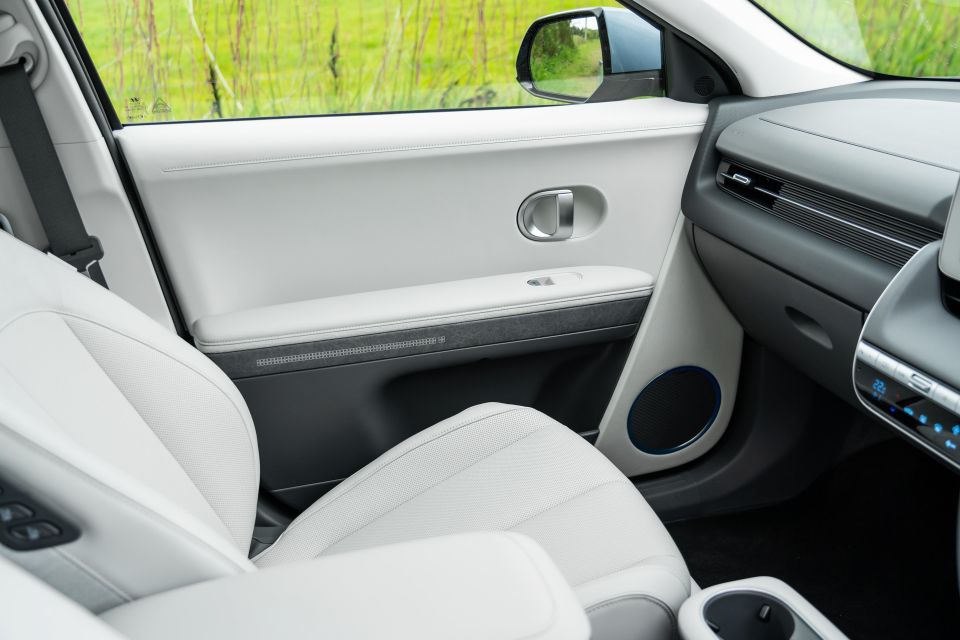

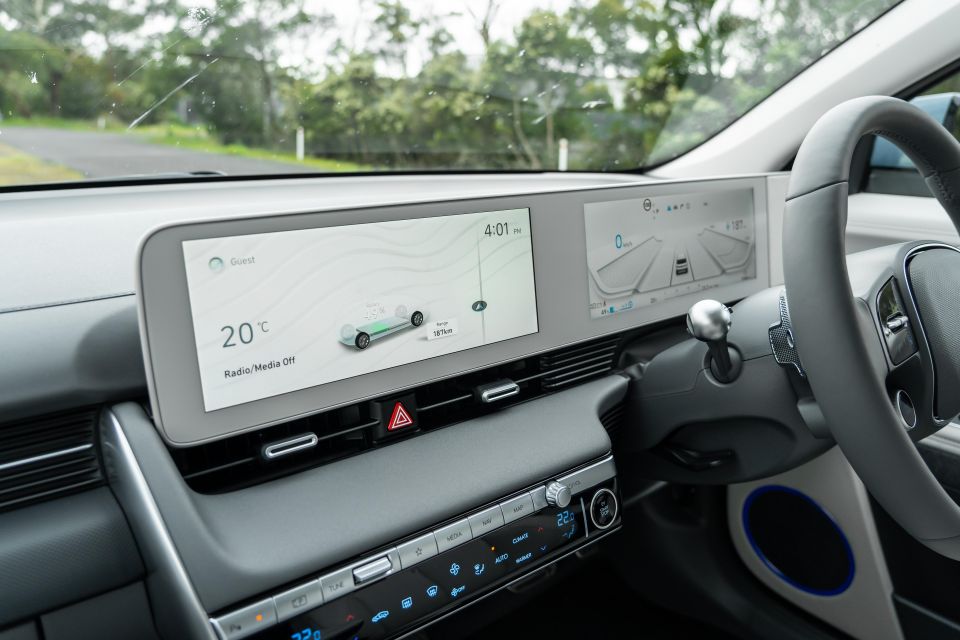
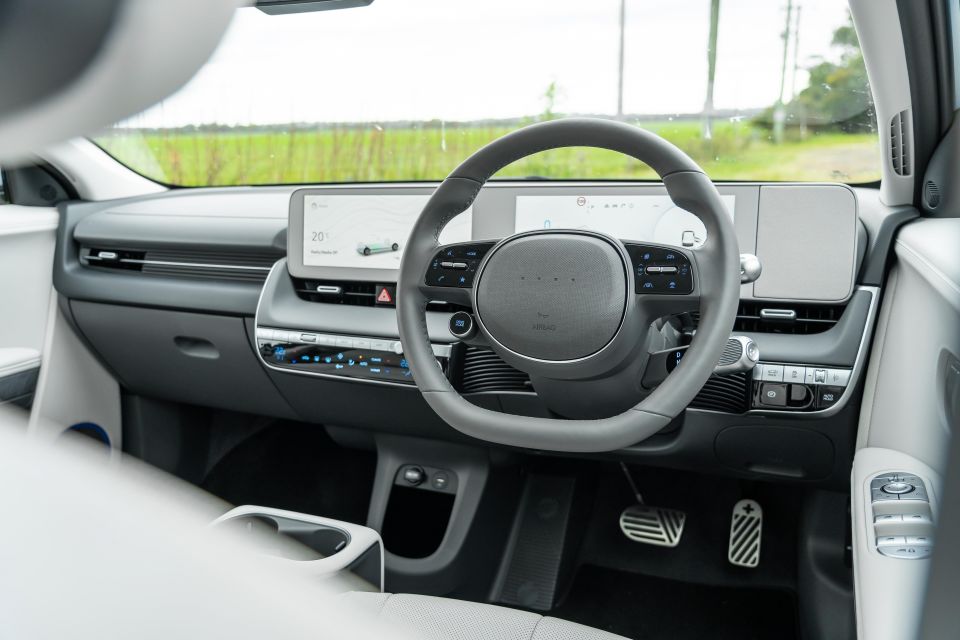
The driver and passenger sit in supple, electrically-adjusted seats with a huge range of motion. They slide a long way back and drop down low enough for taller drivers to get comfortable, and the way they pivot as one piece rather than making you tilt the base and backrest separately opens the door for comfortable driving positions if you’re odd-shaped like me.
Hyundai calls them Zero Gravity seats, because they can be reclined into an airline-style bed for when you’re charging. We didn’t do any stargazing through the full-length glass roof, but we can confirm they’re ideal for napping if all the 350kW DC public charge plugs are occupied and you need to sit still for a while.
You’re not going to be short of places to store things, between the massive under-dash pocket, drawer-style glovebox, and sliding console between the front seats. It has space for a big handbag at its base, along with a padded under-arm space, a wireless phone charger, and two USB ports.
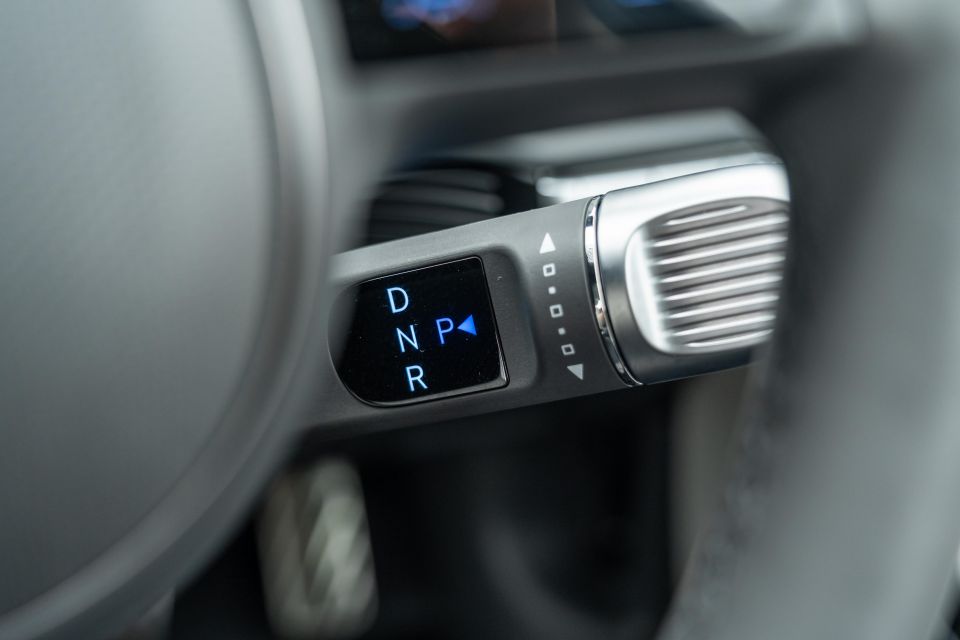

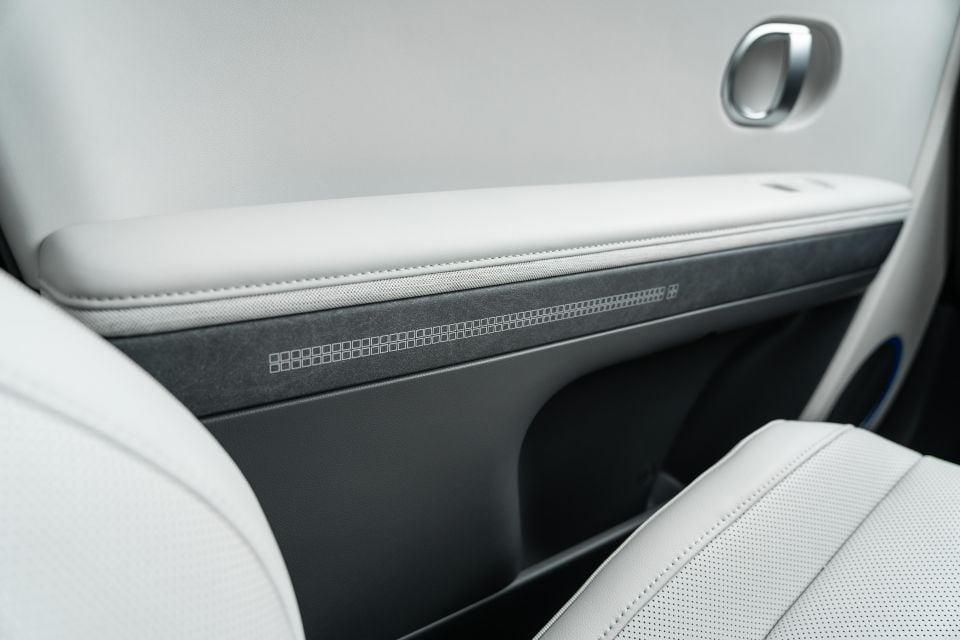
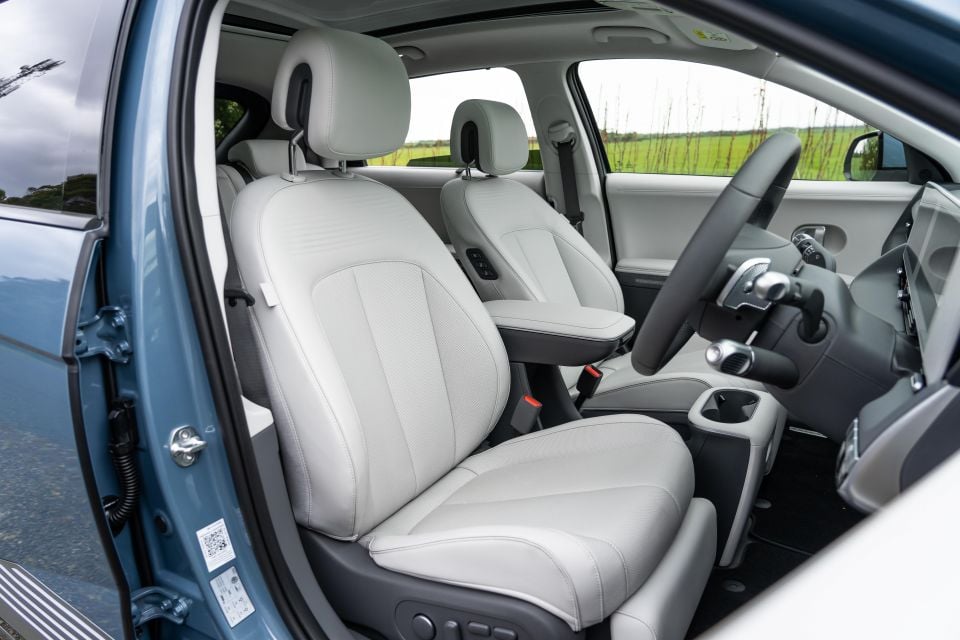
It’s a shame Hyundai hasn’t followed most of its rivals to offering more modern USB-C ports in its tech flagship, and the only port that supports smartphone mirroring is a long way from the driver rather than in the central space.
Although it’s housed in a slick-looking white surround, the infotainment system is a very minor reskin of the setup you get in essentially every other new Hyundai or Kia. It’s mounted a long way from the driver, which makes reaching its corners hard even if you have long arms like me, but most of the menus are easy to work out on the move.
The shortcut buttons at its base are handy, but it would be good to see more electric-specific content baked into the navigation. Finding a charge station requires diving through a POI menu, for example, and it’s odd that the vehicle silhouette you see at startup isn’t an Ioniq 5. Instead it’s an i30 hatchback with a battery graphic.

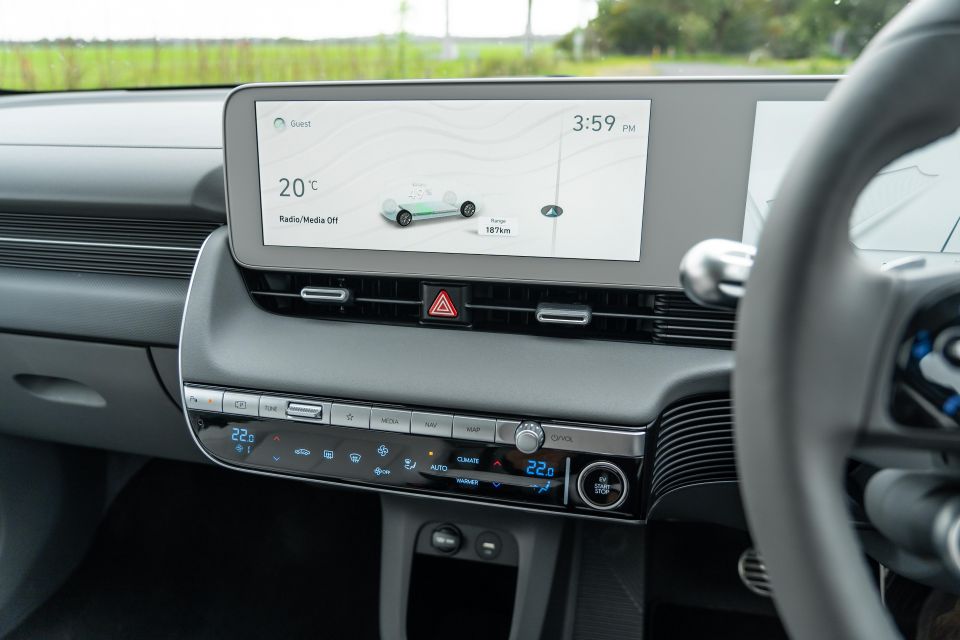
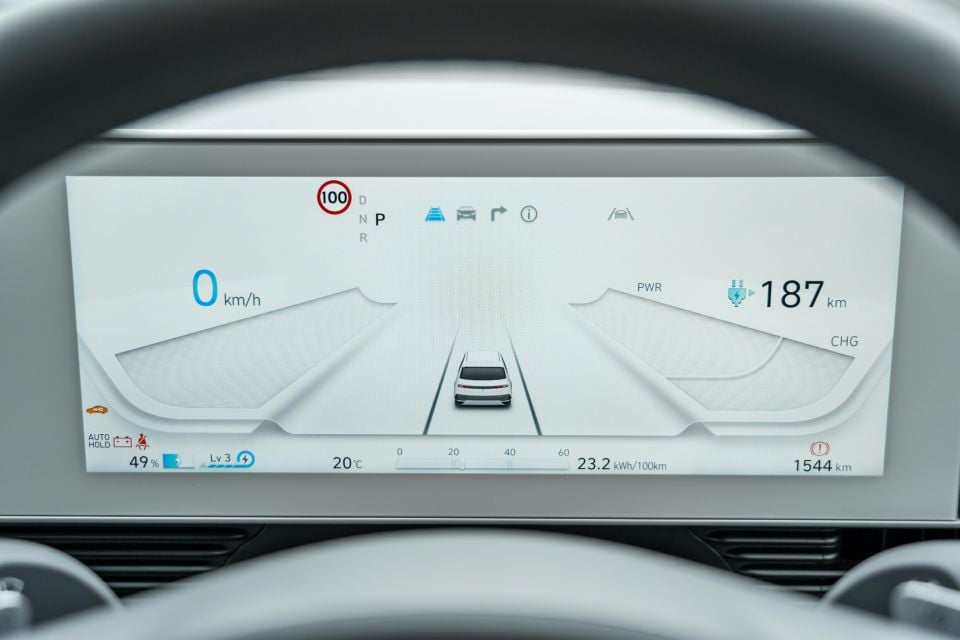
Where expert car reviews meet expert car buying – CarExpert gives you trusted advice, personalised service and real savings on your next new car.
These sound like small things, but they point to the fact the level of time and effort poured into differentiating the exterior hasn’t been matched by the team responsible for the infotainment. It’s functional and full-featured, but it’s also more normal than the rest of the car. Likewise the digital instrument cluster, which can’t display live maps.
Beneath the touchscreen is a climate control pod with capacitive controls. It’s better than having no proper climate controls, but Hyundai still forces you to use the touchscreen to activate your seat heater.
Rear seat space is good, although toe-room is compromised by the base of the ‘zero-gravity’ seats. There’s no real hit on headroom from the panoramic roof, and legroom is impressive for leggy rear passengers. You get proper mid-size SUV space back there.
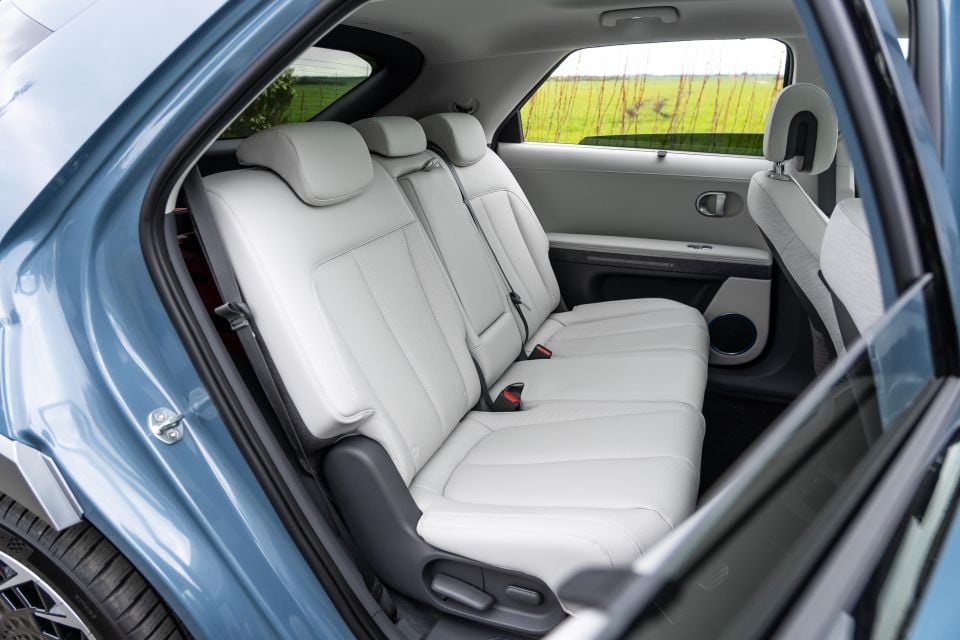
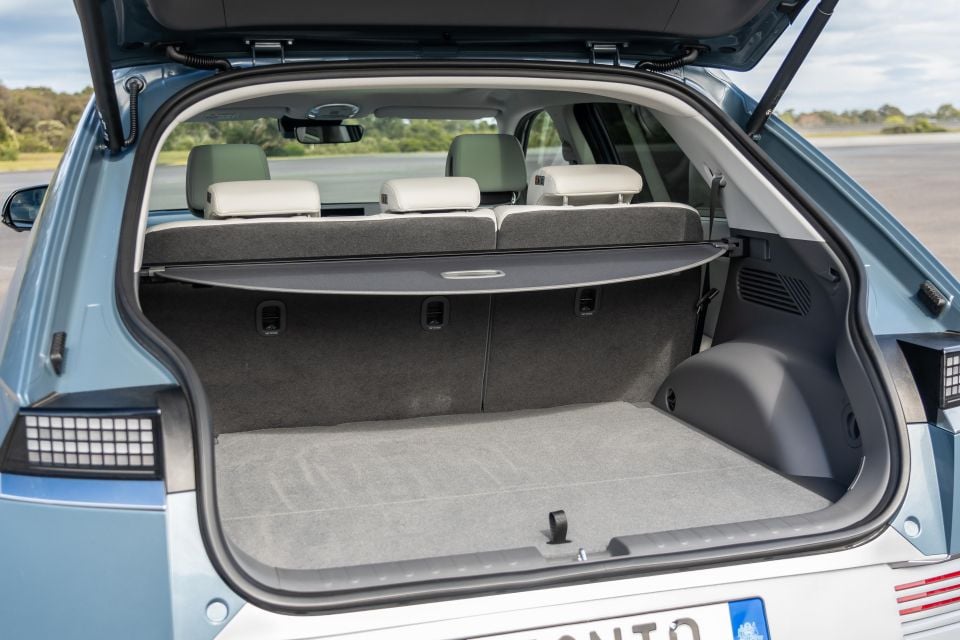
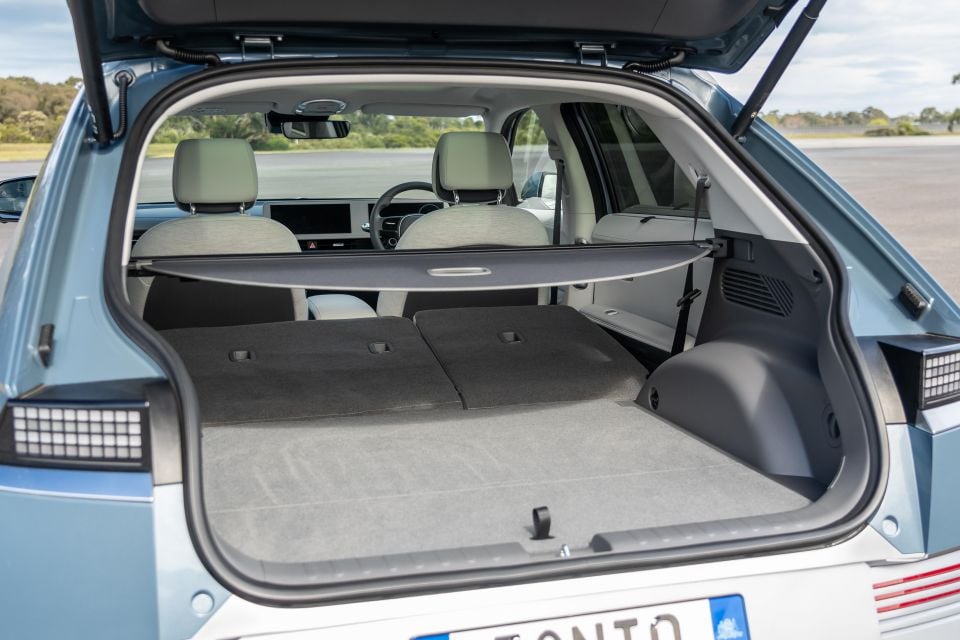
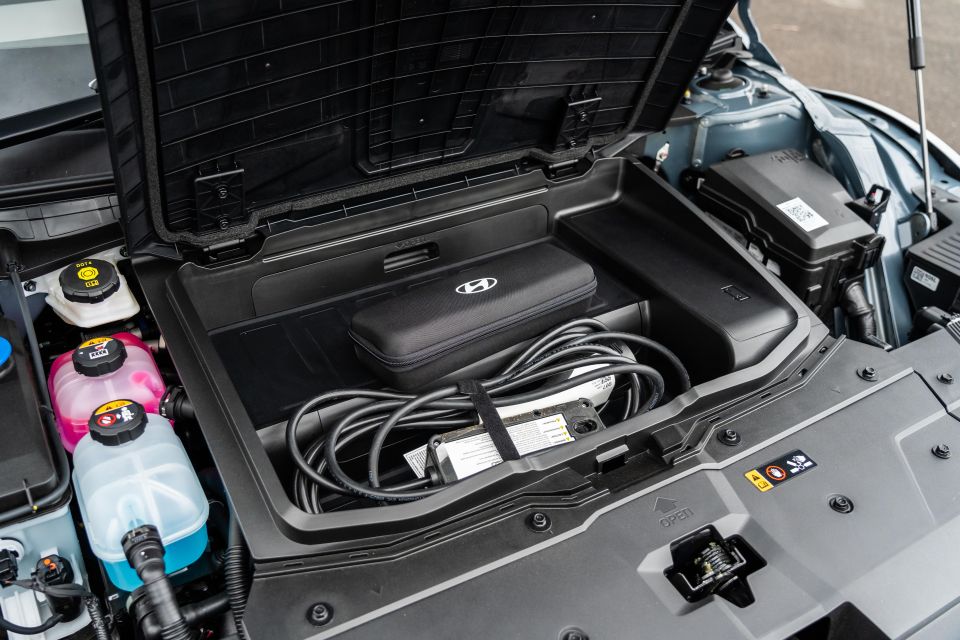
The air vents are located at face level in the b-pillars to accomodate the sliding storage space up front, and you get a fold-down central armrest, spacious door pockets, and map pockets. There are two ISOFIX and three top-tether points for child seats.
On paper, the 527L boot sounds spacious. In reality, it’s a bit limited by the angular roofline and high floor, and doesn’t really offer meaningfully more room than the smaller Volvo. It’ll swallow big suitcases or golf clubs comfortably, but the gap between the floor and luggage blind is slim, and most of the underfloor storage is eaten up by the subwoofer.
The front boot is suitable for charge cables but not much more.
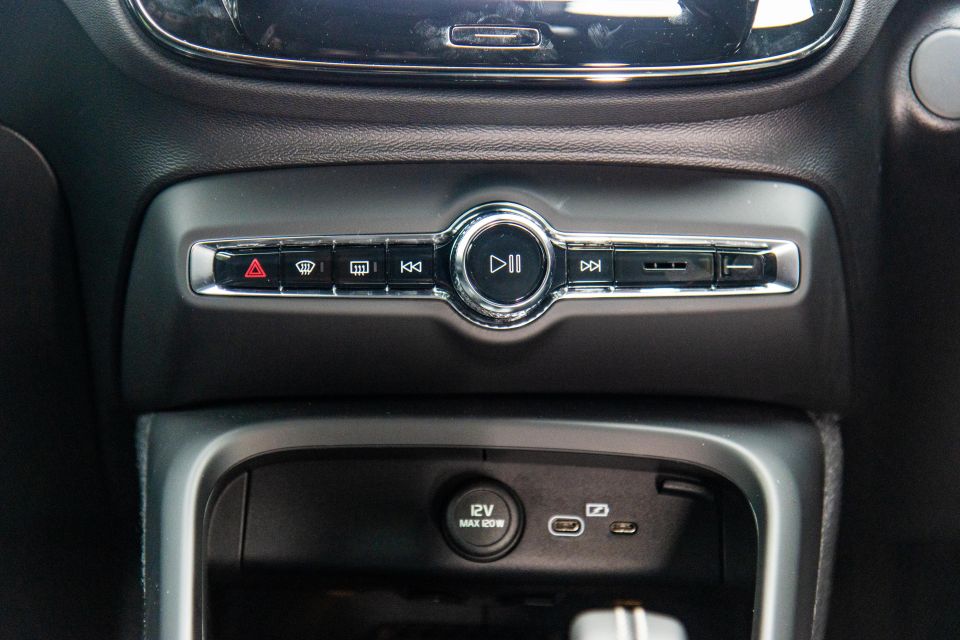


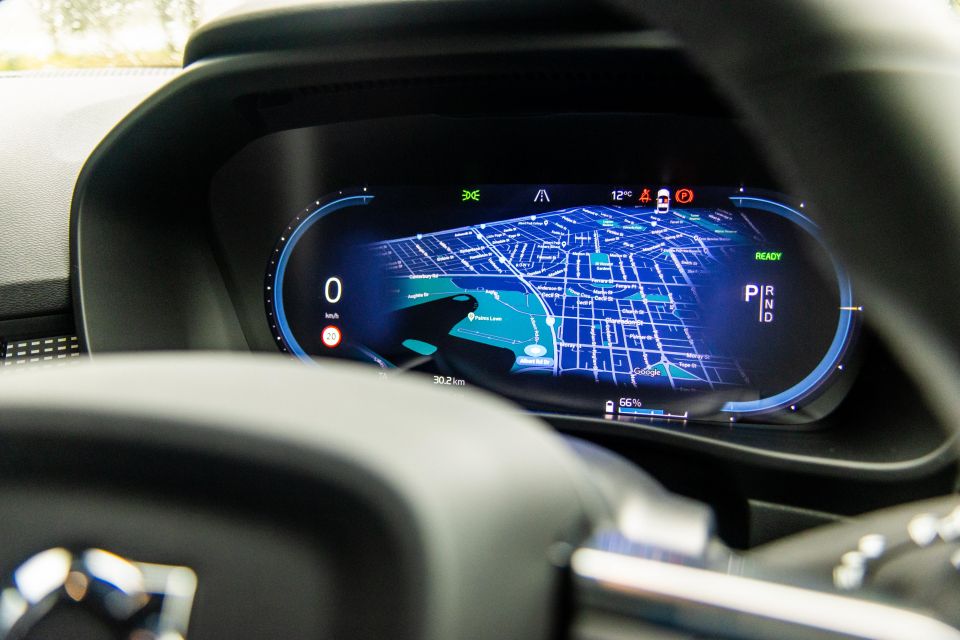
Volvo XC40 Recharge Pure Electric
The XC40 Recharge Pure Electric feels like a normal XC40, which puts it in stark contrast with the lounge-like Hyundai.
There’s one big difference between the XC40 Recharge Pure Electric and the regular line-up, and that’s the Android Automotive infotainment system. We’ll get to that, but before we do it’s worth talking about how well thought-out the XC40 interior is.
This is technically the baby of the Volvo range, but there’s a real sense of space from behind the wheel.
The front seats offer a commanding view over the square bonnet, and strike a perfect balance between soft padding and the sort of support you need on longer drives. Volvo traditionally does some of the best pews in the business, and the XC40 continues the tradition.
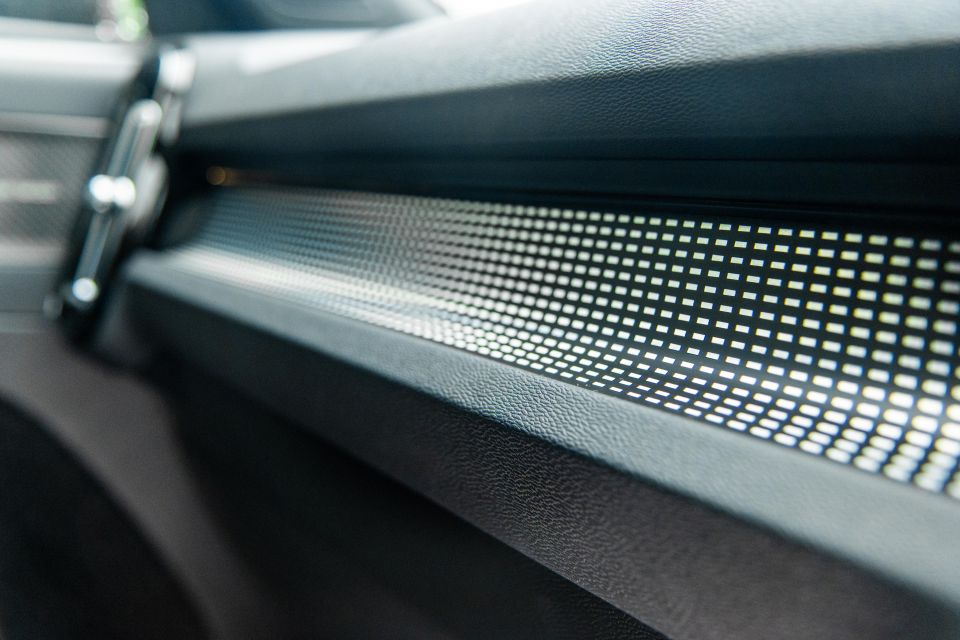
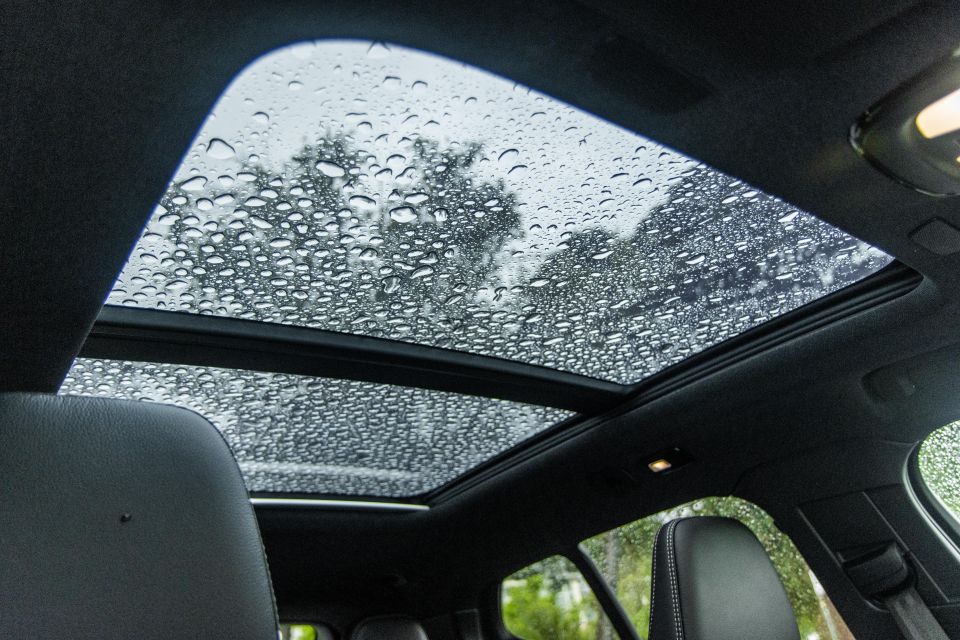
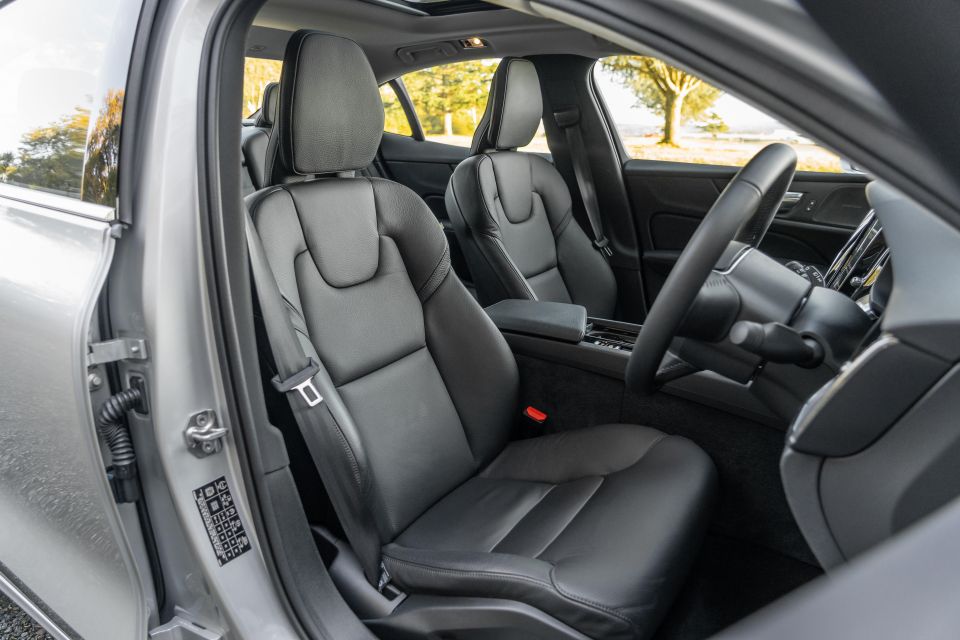
Although they don’t fold right back like the Hyundai seats, the XC40 is arguably more comfortable on a long drive.
With an upright dashboard and minimalist, crisp lines, you won’t be mistaking the XC40 for anything but a Volvo at first glance. Dominating the dash is a vertically-oriented 9.0-inch touchscreen, which sits in the same housing as the display in the petrol model but runs newer software.
Like the related Polestar 2, the XC40 Recharge has Android Automotive infotainment. The bones of the software were developed by Google, which means you get Hey Google voice control and Google Maps standard, but the final system is set up by Volvo to look familiar to anyone who’s used the Sensus system in the current XC40.
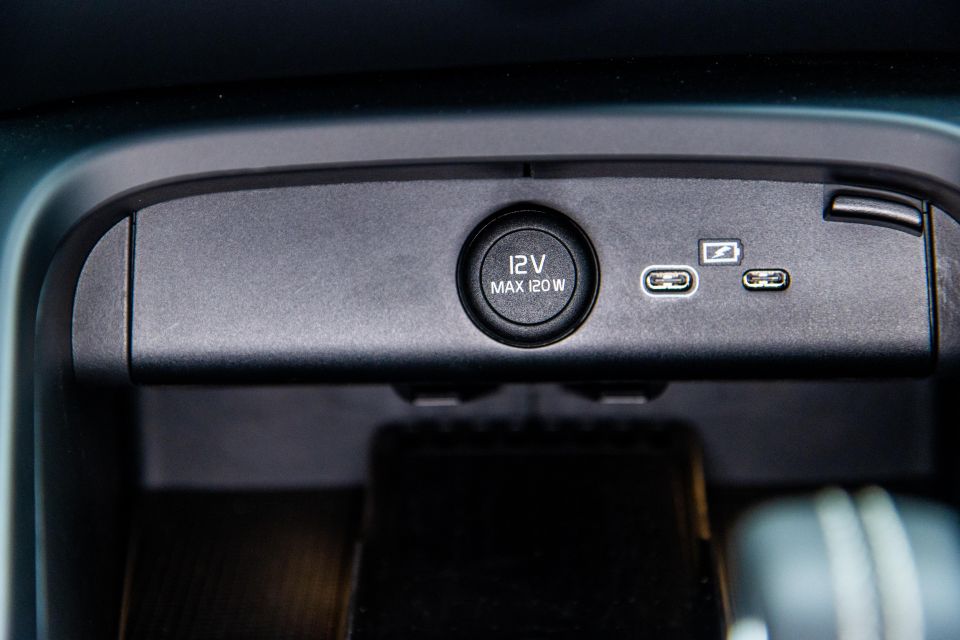
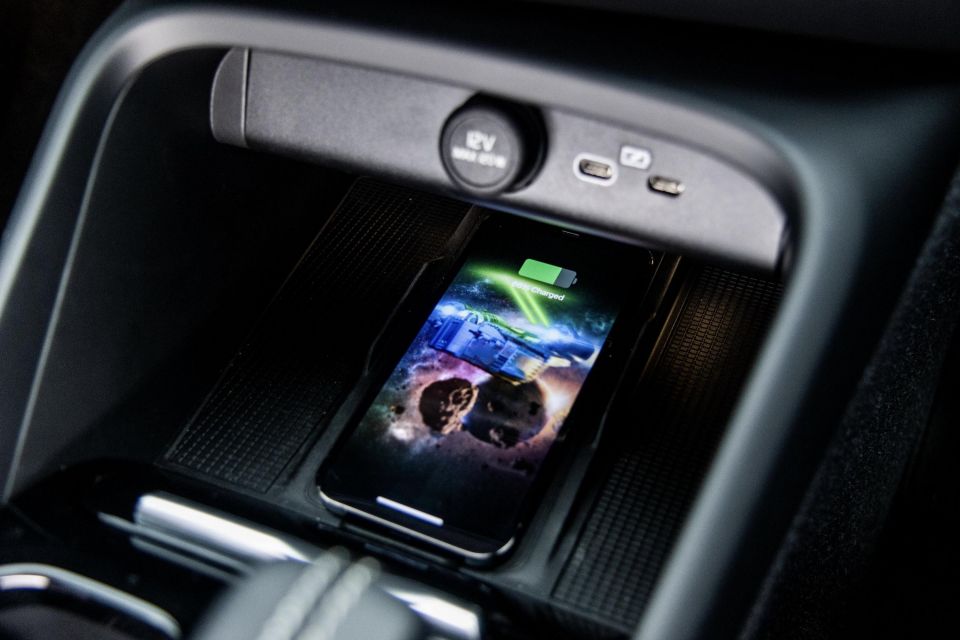
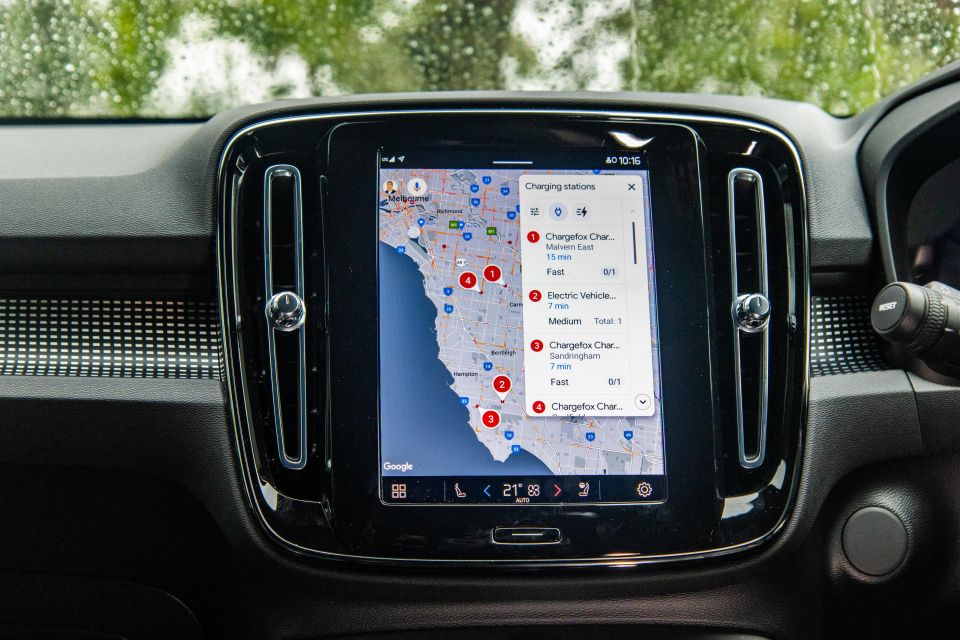
It’s snappy to use, and the ability to download apps like Spotify from the Google Play store opens the door for a level of customisation not currently possible in most infotainment systems. Having the same people who do the software for mobile phones design your Bluetooth interface, for example, means this is one of the easiest cars in which to find a contact and make a call on the move.
When it’s connected to a network, Hey Google is more useful than Hey BMW or Hey Mercedes ever could be… but when it’s not connected to a network, the voice assistant is far less useful.
Smartphone mirroring is coming, but it’s not here yet. These foibles hold the Volvo back from really extending its infotainment advantage over Hyundai.
The driver is faced with a clean, simple digital instrument binnacle with inbuilt Google Maps. It’s excellent, and offers more useful information than the Hyundai’s slightly limited readout.


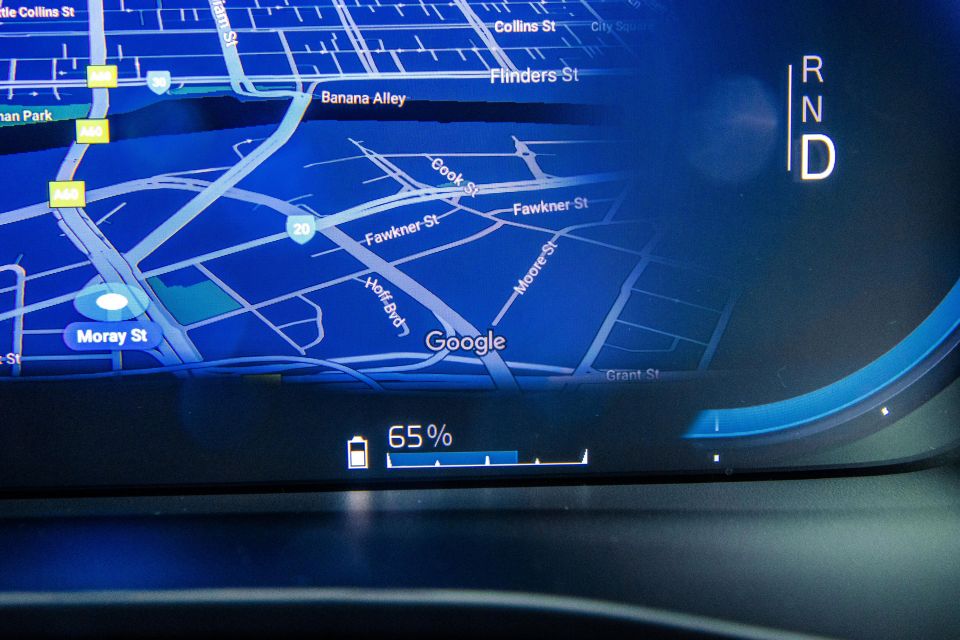
The petrol and PHEV are both good when it comes to interior storage, and the electric model is no different. The deep door pockets, spacious transmission tunnel (this is based on a petrol car), and under-dash space are all cleverly designed.
Even so, the XC40 can’t match the Ioniq for spaces to store your stuff. At least it has USB-C instead of USB-A.
Rear seat passengers are better catered for than you might expect of a car that’s relatively compact on paper. For one, they get their own vents, along with a fold-down central armrest and spacious door pockets. The tall roofline means headroom is good, even with the panoramic sunroof, and the amount of legroom will accomodate tall teenagers.
Some compact-ish crossovers are a kid-only proposition in the rear, but the XC40 punches above its weight. It’s a good place to spend time, and demands few compromises compared to a similarly-priced petrol car.


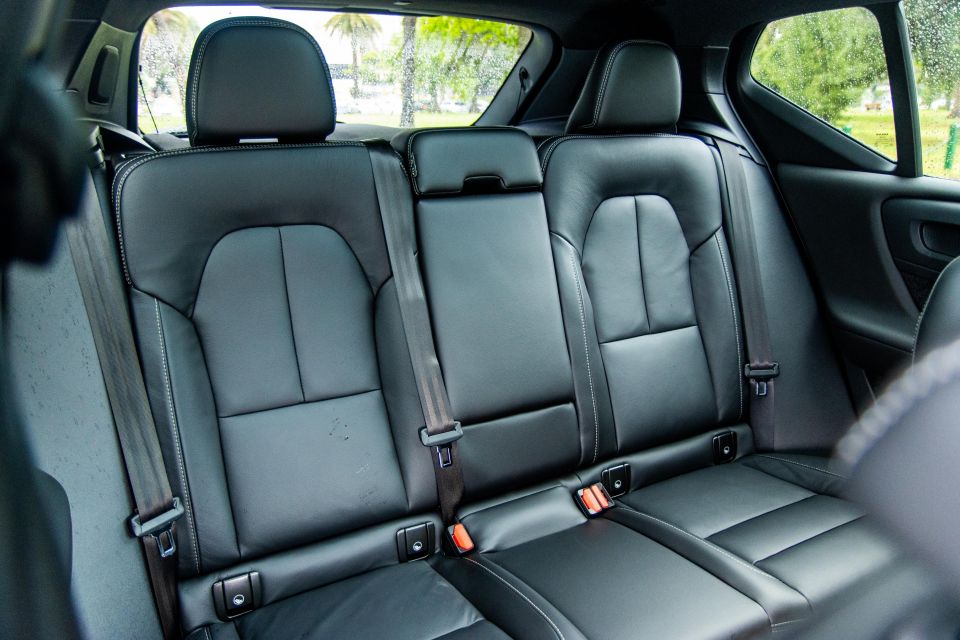
It offers similar levels of legroom to the Ioniq, but falls slightly short. Headroom is also more limited, although it still won’t leave taller passengers
There are two ISOFIX points and three top-tether anchors back there for child seats.
Luggage space is 460L, expanding to 1336L with the second row folded. The boot floor is flat, but it can be folded in half to hang shopping bags, or raised up to reveal a deep cavity beneath it perfect for storing charge cables – or for hiding bags and laptops.
There’s a real gulf between the Volvo and the Hyundai when it comes to boot space on paper, but the end result is roundly similar in practice.
| Hyundai Ioniq 5 | Volvo XC40 Recharge | |
|---|---|---|
| Length | 4635mm | 4425mm |
| Width | 1890mm | 1910mm |
| Height | 1605mm | 1651mm |
| Wheelbase | 3000mm | 2702mm |
| Boot | 527L | 460L |
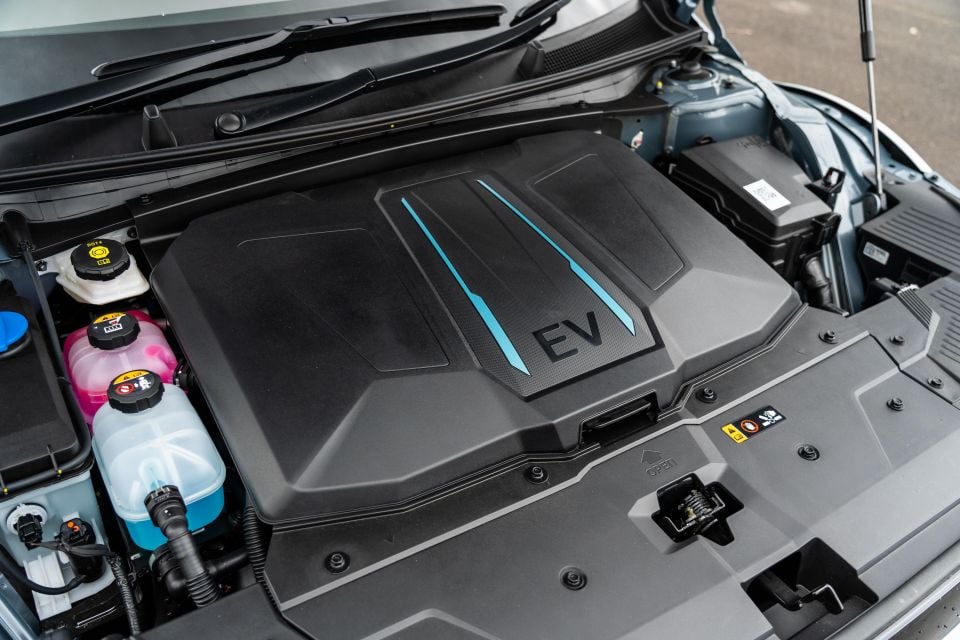
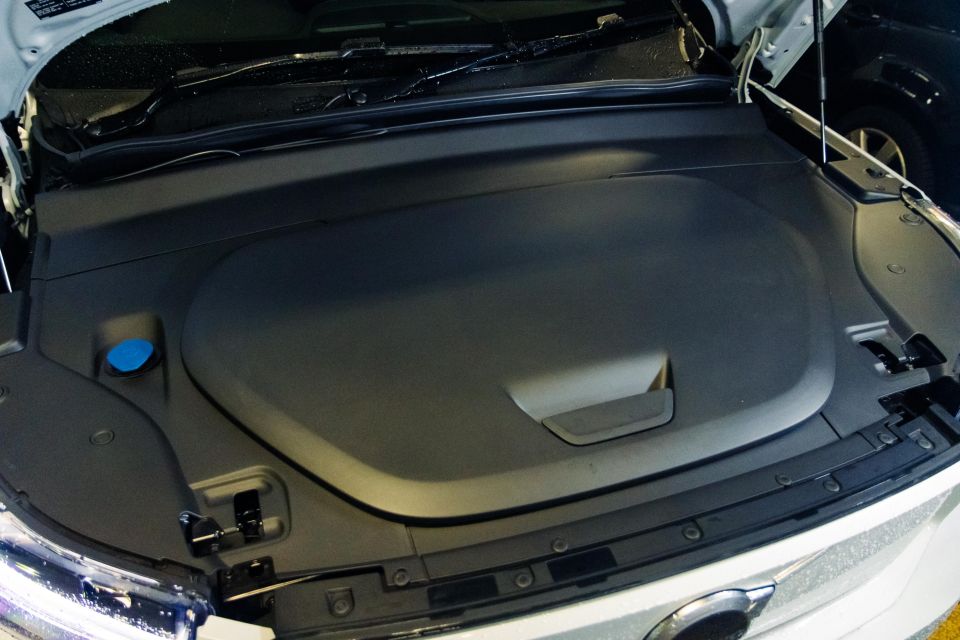
Hyundai Ioniq 5
Two variants of Ioniq 5 are offered in Australia, but we have the more powerful dual-motor variant on test here.
It has motors on both axles for all-wheel drive, and offers a combined 225kW of power and 605Nm of torque. The 100km/h sprint takes a claimed 5.1 seconds.
Under the floor is a 72.6kWh lithium-ion battery pack, good for a claimed range of 430km on the tougher WLTP test cycle. That’s equivalent to energy consumption of 19kWh per 100km.
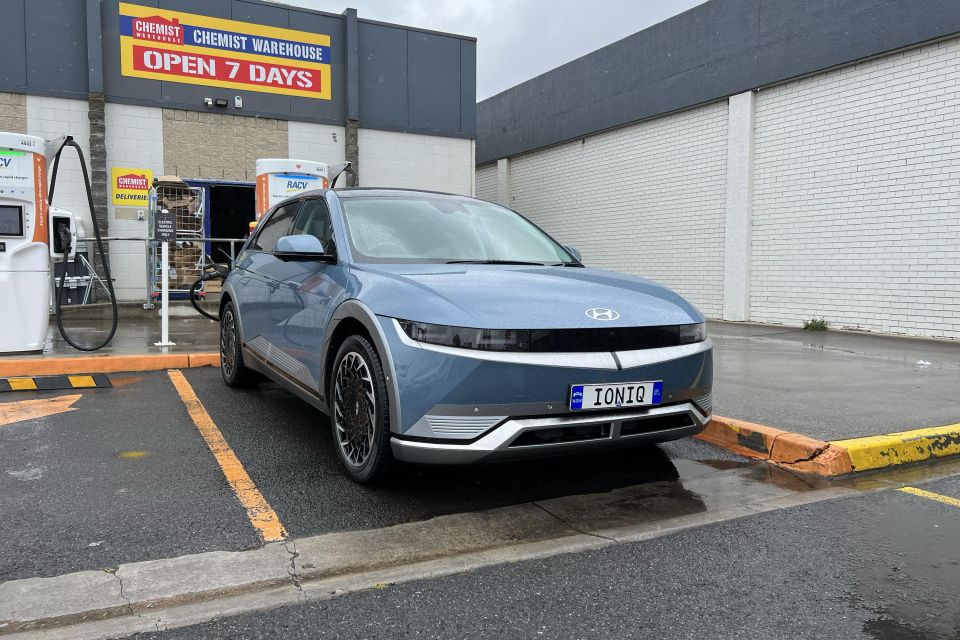
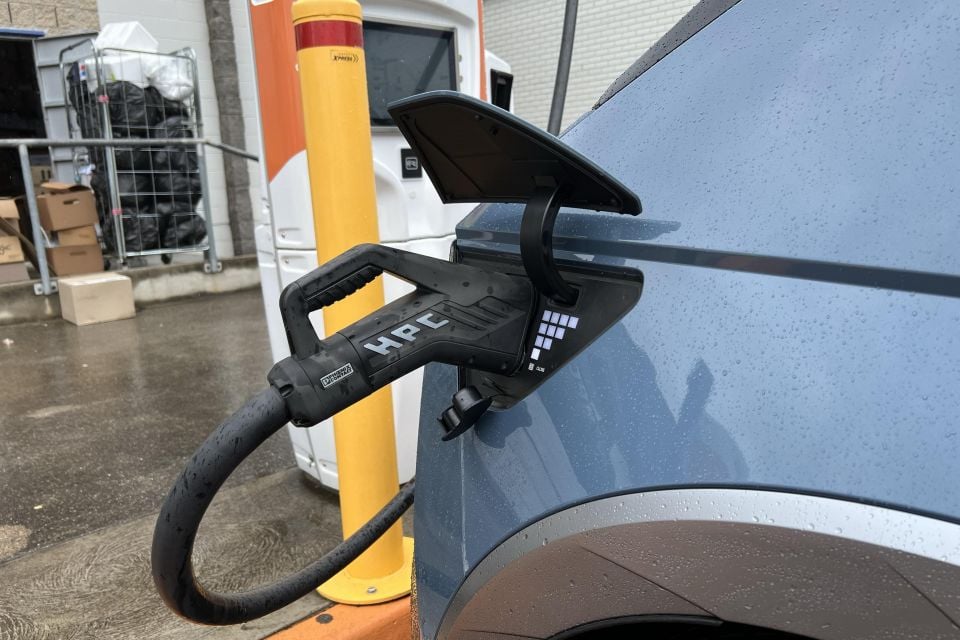
We saw 22.1kWh per 100km on a sustained highway run, and consistently used between 19 and 20kWh per 100km on a city commute.
Thanks to its 800V charging architecture, Hyundai says the Ioniq 5 can handle a charge speed of 350kW connected to a suitable DC public fast charger. We plugged into a 350kW fast charger and, with a 30 per cent state of charge as a starting point, peaked at 140kW.
The charge speed remained above 100kW for the majority of our charge to 95 per cent.
Volvo XC40 Recharge Pure Electric
Power in the XC40 comes from two electric motors, each making 150kW of power. There is no entry-level, single-motor model.
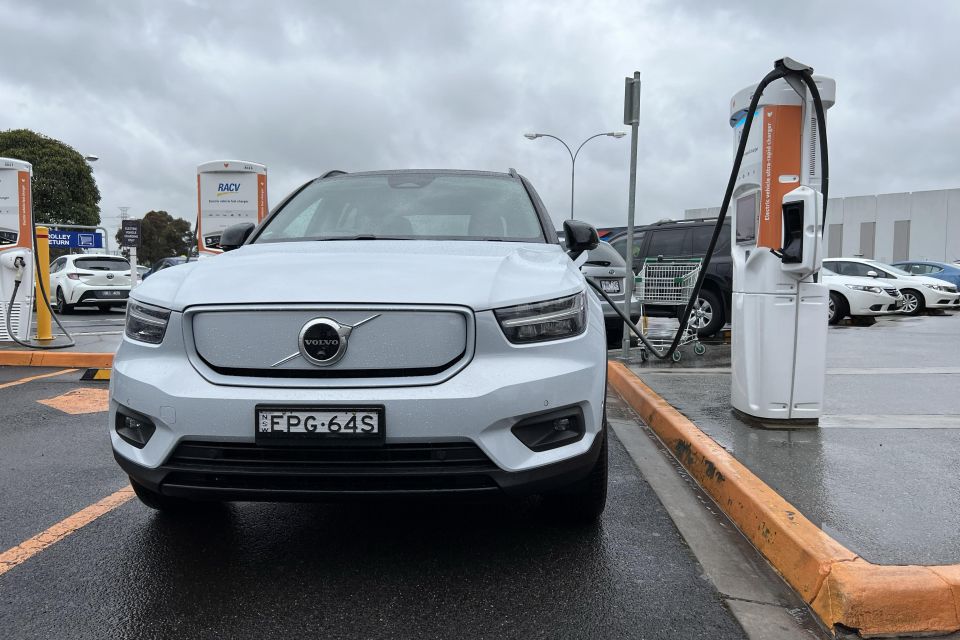
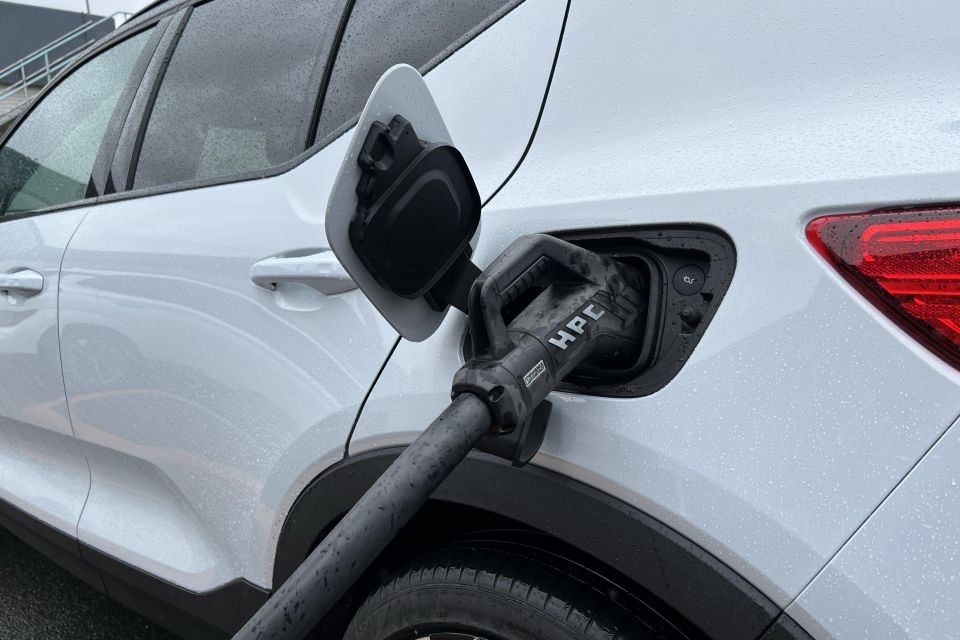
Combined peak power is 300kW and combined peak torque is 660Nm, good for a 4.9-second sprint to 100km/h.
Under the floor is a 78kWh lithium-ion battery pack, and Volvo says you’ll get 418km on a full charge using the WLTP test cycle. That’s equivalent to energy consumption of 18.7kWh per 100km.
We saw 25.2kWh per 100km on the same sustained highway run as the Hyundai, and consistently used between 22 and 23kWh per 100km on a city commute.
The Volvo’s peak charging speed is 150kW, but the way the car manages its battery temperature means you’ll only see charge speeds north of 100kW when the battery is between 20 and 40 per cent, before it tapers to around 70kW when you hit around 55 per cent charge.
We plugged into a 350kW fast charger and, with 55 per cent charge as a starting point, saw between 45kW and 70kW charge speeds on the way to 88 per cent.
| Hyundai Ioniq 5 | Volvo XC40 Recharge Pure Electric | |
|---|---|---|
| Weight | 2100kg | 2150kg |
| Front suspension | MacPherson Strut | MacPherson Strut |
| Rear suspension | Multi-link | Multi-link |
| Dampers | Passive | Passive |
| Steering | Electro-mechanical | Electro-mechanical |
| Front brakes | Ventilated disc | Ventilated disc |
| Rear brakes | Solid disc | Solid disc |
| Ground clearance | 160mm | 176mm |

Hyundai Ioniq 5
The Ioniq 5 backs its lounge-like cabin with a suitably relaxed driving experience.
The ride is languid, and the way the accelerator pedal is tuned means you can precisely dole out the motors’ torque for smooth, un-fussed progress. If you want a car that’ll float you home after a hard day at work, few are more relaxing for the price.
Hyundai offers a choice of four different brake regeneration levels, including an “iPedal” mode that allows for one-pedal driving. You can flick through the modes using the paddles behind the wheel, but you can’t set one-pedal mode as your default – it needs to be selected each time you take the Ioniq out of park.
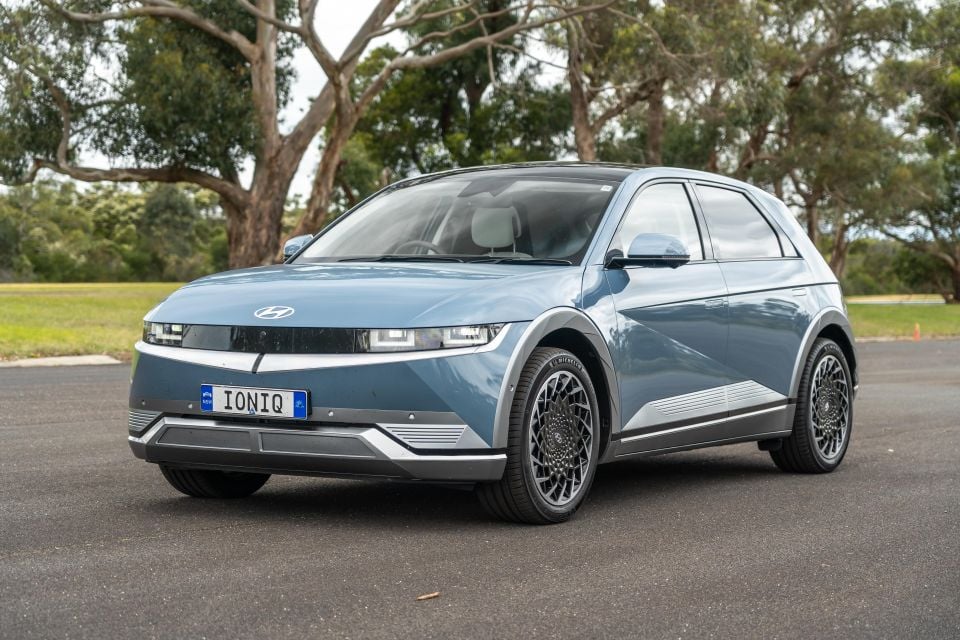
It’s infuriating, and is totally out of keeping with the electric-first ethos that has otherwise informed the car.
Flicked into iPedal mode, the Ioniq quickly becomes natural to drive in the city. It doesn’t have the same shove in the back you get from the Volvo on lighter throttle inputs, but dig deeper into the right-hand pedal’s travel and this two-tonne crossover is hot-hatch quick.
Where the Volvo has weighty, quick steering off centre, the Hyundai demands a bit more arm-twirling. It’s light and fluid, and matches neatly with the long-travel accelerator and soft suspension. There’s real cohesion to the way the Ioniq drives; it has a plush, luxurious feeling from behind the wheel.
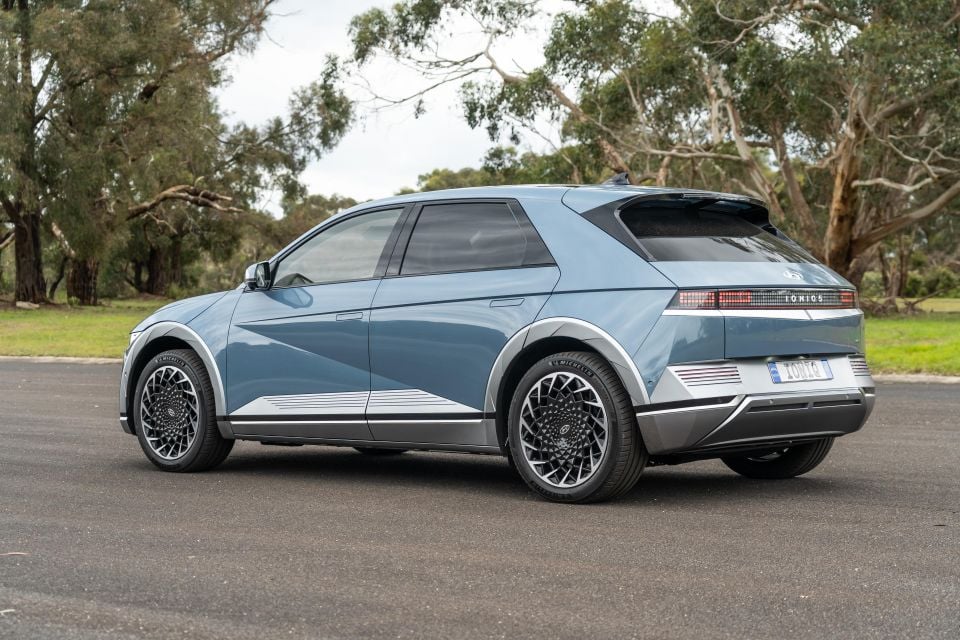
You need to be mindful of its size, though. Although it’s technically a mid-sized SUV the wheelbase on the Ioniq is longer than that of a Palisade, which means you need to adjust your inputs accordingly.
It doesn’t feel quite as wieldy as the Volvo in tight city streets and garages, although the suite of cameras and sensors that are standard mean there’s no excuse for kerbed wheels.
Out on the highway, the Hyundai feels more grown-up than the Volvo. There’s less wind and tyre noise, and its plush suspension means on smooth roads you just hum comfortably along. The dual-motor powertrain runs in single-motor mode at a constant speed, so you get decent highway economy as well.

The only real chink in its armour is the way it behaves on undulating country highways, where the relaxed suspension and chunky body combine to make the Ioniq feel a bit like a boat. It takes one, two, three movements to settle after big crests or dips, and successive bumps expose the slightly-too-loose body control.
The framework for an excellent ride and handling balance is there, but a bit more finesse is required. It’ll be interesting to see where Kia goes with the EV6, given it’s the same as the Ioniq 5 under the skin.
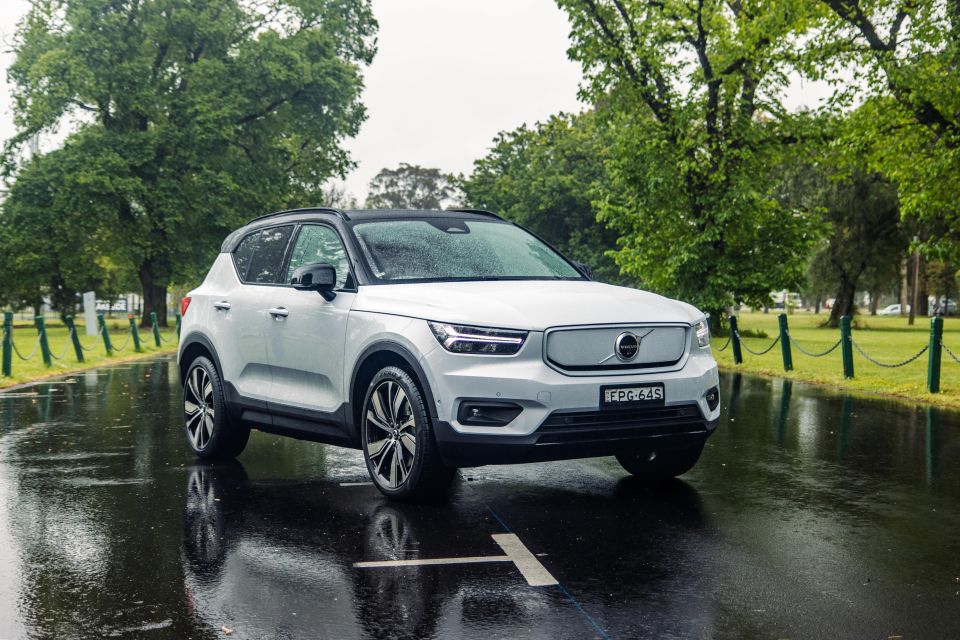
Volvo XC40 Recharge Pure Electric
The smaller Volvo feels immediately sportier than the Hyundai.
The right-hand pedal is heavy, the steering is more direct, and the motors pack a more immediate punch when you dip into the throttle travel. Although they offer near-identical performance on paper, the XC40 feels faster than the Ioniq.
It gives you a proper shove in the back off the mark, and feels every bit as quick as the closely-related Polestar 2 Dual Motor AWD on the move – even though the Volvo is taller, heavier, and slower on paper.

Unlike Hyundai, Volvo has kept choices about how the XC40 drives to a minimum. The default setting for regenerative braking is designed to mimic a conventional car, forcing the driver to use the brake pedal to come to a complete stop, but once you select one-pedal mode it just stays there. Good.
The Hyundai’s regenerative braking is a bit smoother when you lift off the accelerator, but it doesn’t take too long to dial into what’s required from the XC40. Being electric, it’s every bit as smooth and quiet as the Hyundai at low speeds.
It’s also a happier camper in the city, where its upright body and more compact proportions make it a natural fit.
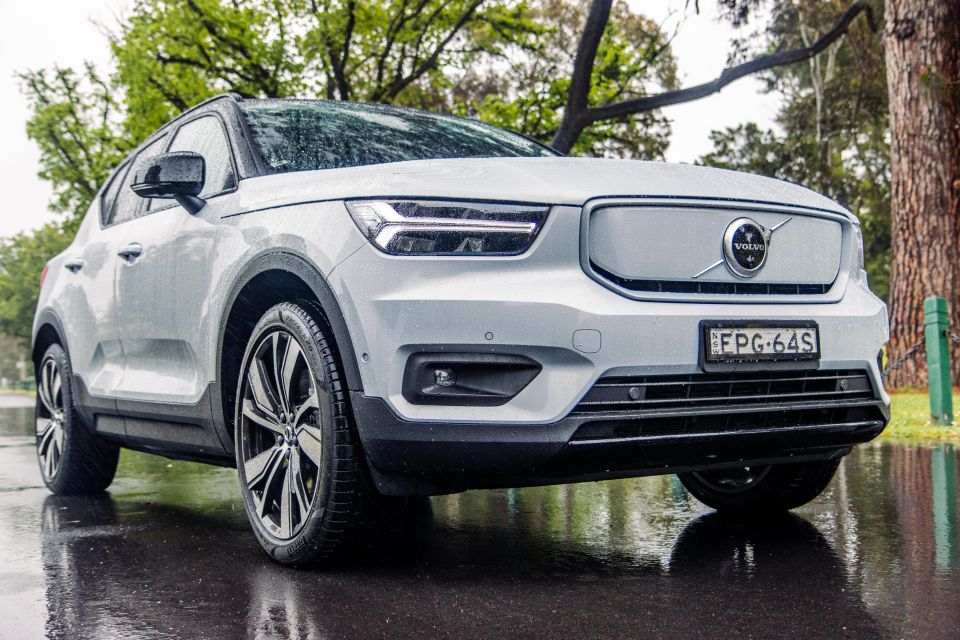
It’s squeeze more easily into tight parking bays, and is easier to thread through my tight underground garage. The grainy surround-view camera isn’t exactly ideal for small spaces, though.
With a springier, tauter suspension tune, the Volvo doesn’t have a plush ride like the long-travel, long-wheelbase Ioniq. Keeping the body of a 2100kg compact crossover in check isn’t easy, especially when you’re working with passive springs and dampers.
It still does a good job keeping city bumps and potholes out of the cabin though, and it’s a more tied-down car over big crests and dips on the highway.
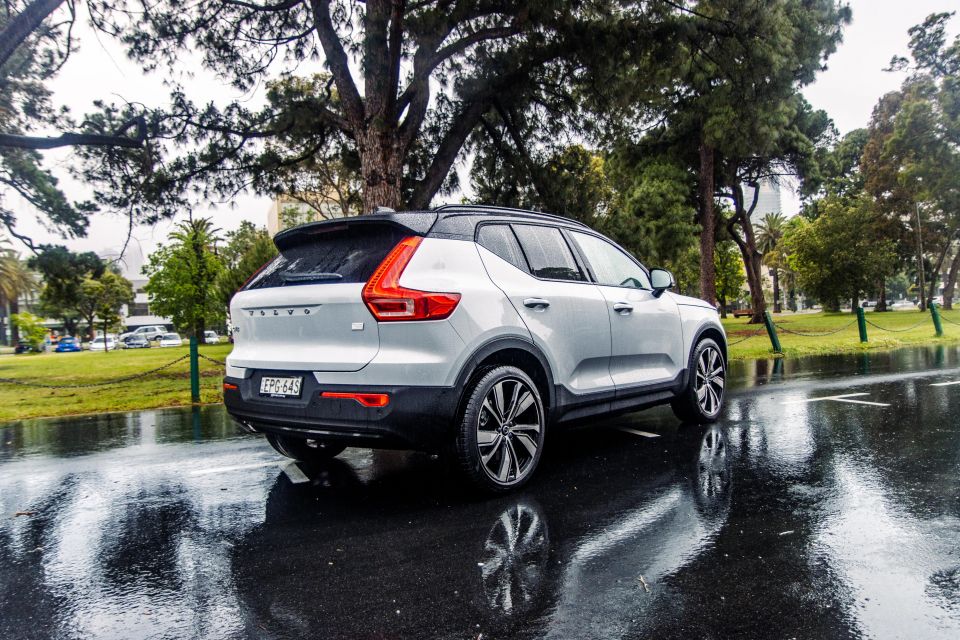
Road noise is more noticeable in the Volvo than the Hyundai, especially on country roads. The extra helping of tyre roar and wind rustle from the mirrors will have you turning up the stereo a couple of clicks, although it’s still quieter than, say, a Mercedes-Benz GLA on similar roads. It’s just not up to quite the same standard as the Ioniq.
Where the Volvo really shines on the open road is when it comes to its driver assists. Both of these cars have systems capable of keeping you a set distance behind another car, and actively steering to stay between the white lines.
But the Volvo’s steering system is better calibrated than that of the grabby, hands-on Hyundai. Both achieve the same outcome, but the lane-centring system in the Ioniq can feel a bit like you’re wrestling the car’s computer brain.
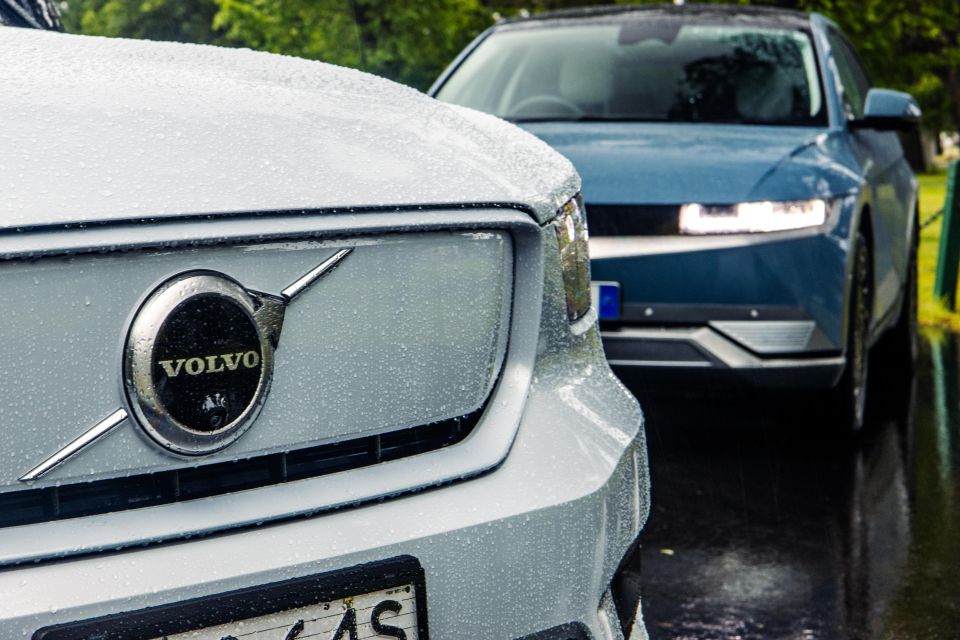
Hyundai Ioniq 5
Hyundai covers its range with a five-year, unlimited-kilometre warranty.
Servicing is required every 12 months or 15,000km, whichever comes first. Four of the first five services cost $220, and one is priced at $804 for a total five-year cost of $1684.
Volvo XC40 Recharge Pure Electric
The XC40 Recharge is backed by the same five-year, unlimited-kilometre warranty as the rest of the Volvo range.
Servicing is required every 24 months or 30,000km, and the first three years of maintenance is included in the price.

Despite their on-paper similarities, these are two distinctly different cars.
Volvo has done a good job with the XC40 Recharge Pure Electric, given it’s built on the same bones as the internal-combustion range. Some ICE-based electric cars feel compromised, the Volvo doesn’t.
It feels sportier to drive than the Hyundai, and the fact it flies under the radar will appeal to early-ish adopters who don’t want to broadcast their environmental credentials to the rest of the world. It’s not quite as good as the Hyundai, though.

The Ioniq 5 is a confident, clever step into the world of pure-electric motoring for Hyundai. Having dipped its toe into the waters of battery-electric technology with the Ioniq and Kona Electric, it’s now diving in headfirst.
Not only does the Ioniq 5 look more special than the Volvo, it’s a better electric car. It charges faster, has vehicle-to-load technology on board, and returned better real-world energy consumption than the Volvo despite its dual-motor powertrain packing a similar punch.
That’s before you consider its beautiful, airy interior, and the fact you can pay less than our tester for a longer-range, single-motor version.
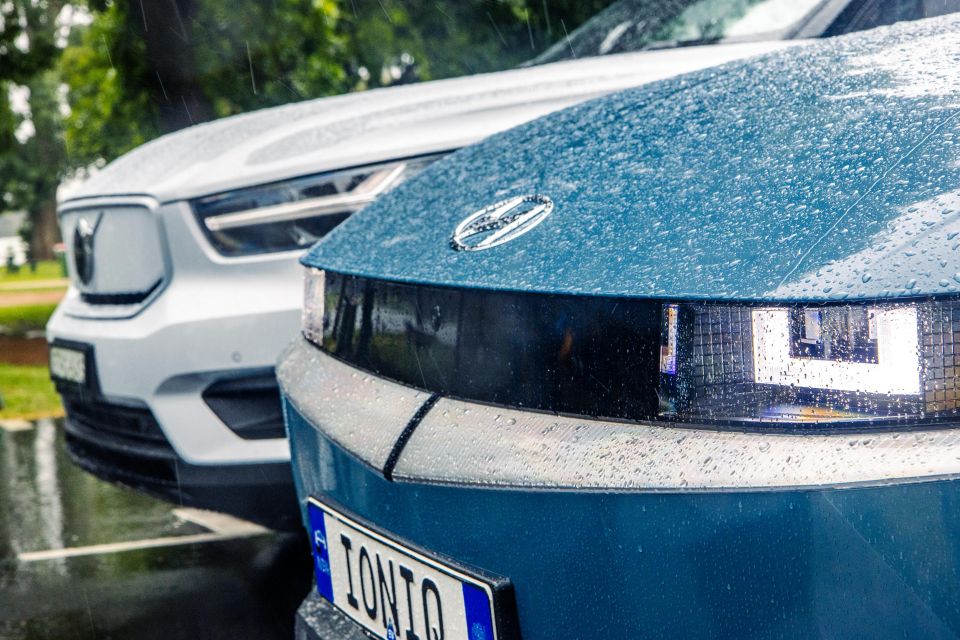
There’s still some room for improvement. It’s strange Hyundai makes one-pedal driving an option you need to select every time you start the car, the retro-futuristic exterior impedes boot space, and the floaty ride doesn’t exactly inspire confidence on undulating roads.
But it’s the winner of this comparison, and shows there’s no substitute for making a car electric from the ground-up.
All we need is for Hyundai to lock in more stock for Australia.
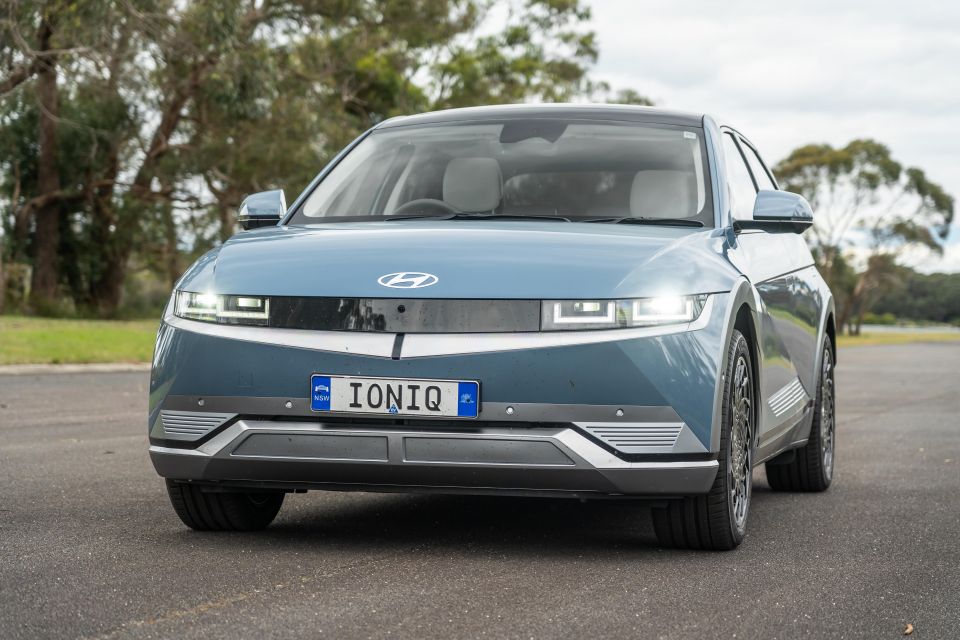
MORE: Everything Hyundai Ioniq 5 MORE: Everything Volvo XC40 Recharge
Share your thoughts with us in the comments below!
Scott Collie is an automotive journalist based in Melbourne, Australia. Scott studied journalism at RMIT University and, after a lifelong obsession with everything automotive, started covering the car industry shortly afterwards. He has a passion for travel, and is an avid Melbourne Demons supporter.
Share your thoughts and write a review of a car you own and get featured on CarExpert.


William Stopford
12 Hours Ago


Ben Zachariah
13 Hours Ago


Derek Fung
13 Hours Ago


Matt Campbell
20 Hours Ago


William Stopford
1 Day Ago


Josh Nevett
2 Days Ago